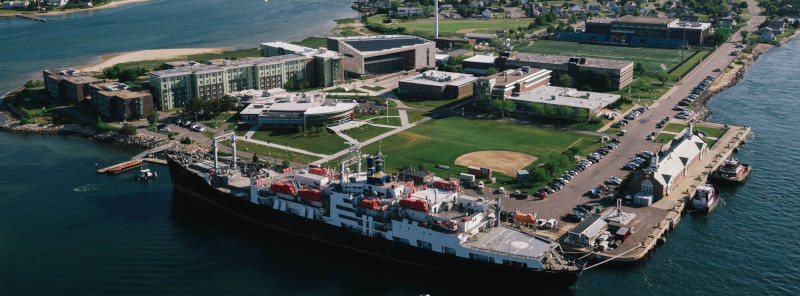Menu toggle
July 12, 2022: Massachusetts Maritime Academy selected to participate in Department of Energy's Collegiate Wind Competition
July 12, 2022: Today, the U.S. Department of Energy (DOE) announced the 30 colleges and universities selected to participate in Phase 1 of the 2023 Collegiate Wind Competition (CWC). These teams will participate in the CWC during the first half of the 2022-2023 school year.
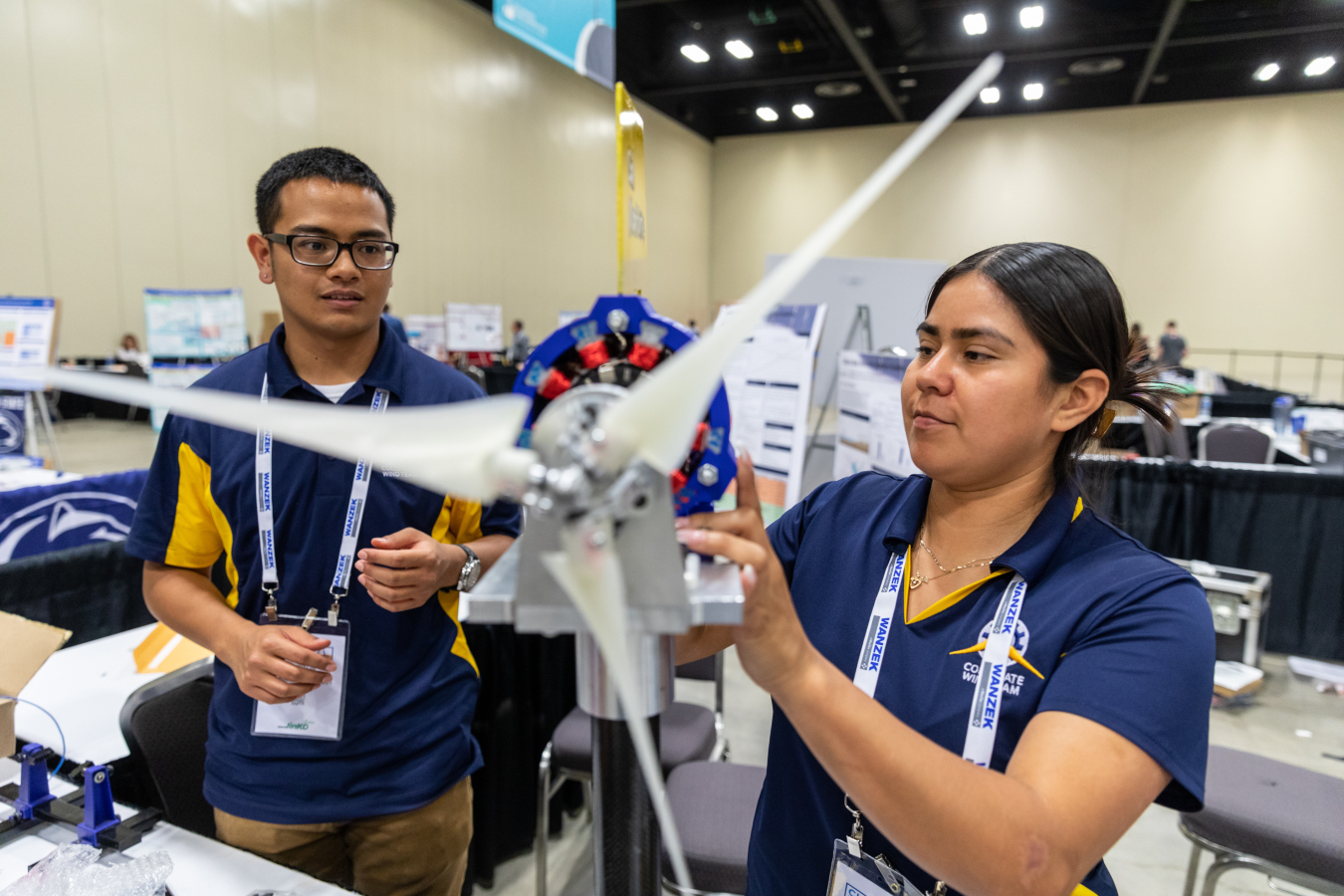
30 teams will participate in Phase 1 of the 2023 U.S. Department of Energy Collegiate Wind Competition, which will take place during the first half of the 2022-2023 school year.
The CWC, which first launched in 2014, helps prepare the future wind energy workforce by inviting college students from a range of disciplines to represent their schools as they design, build, and test a prototype wind turbine; develop a site plan and cost-of-energy analysis for a hypothetical wind farm; and conduct outreach with the wind energy industry, their communities, and local media outlets.
Similar to the 2022 CWC, the 2023 CWC will focus on the theme of siting, outreach, and development challenges associated with fixed-bottom offshore wind energy projects. During Phase 1, teams will develop a preliminary design and report for their prototype wind turbine and a preliminary site design for their hypothetical offshore wind farm. They will also interview professionals from different wind industry sectors to learn about career opportunities and create outreach materials to educate and inspire younger students. Phase 1 teams will be eligible for up to $5,000 in funding, which they can use to design their technologies, create their wind energy project development plans, and conduct their outreach activities.
The colleges and universities selected to participate in Phase 1 of the 2023 Collegiate Wind Competition are:
- Brigham Young University
- California Polytechnic State University, San Luis Obispo
- California State University Maritime Academy
- California State University San Marcos
- Iowa State University
- James Madison University (with the University of Malta—Pending)
- John Hopkins University
- Kansas State University
- Manhattan College
- Massachusetts Maritime Academy
- Northern Arizona University
- Oklahoma State University
- Rice University
- Rutgers University
- Texas A&M University, College Station
- Texas A&M University–Corpus Christi (with Transilvania University of Brazov)
- Texas Tech University (with South Plains Community College)
- The Pennsylvania State University
- Universidad Ana G. Mendez
- University of California, Los Angeles
- University of Colorado Boulder
- University of Delaware
- University of Massachusetts Lowell
- University of North Carolina at Charlotte
- University of Oklahoma
- University of Texas at Dallas
- University of Wisconsin–Madison
- University of Wyoming
- Virginia Tech University
- Washington State University Everett (with Everett Community College).
Among these 2023 CWC participants are two community colleges—South Plains Community College and Everett Community College—as well as two international schools—the University of Malta and Transilvania University of Brazov. In addition, 12 minority-serving institutions are participating in Phase 1, including eight Hispanic-Serving Institutions and six Asian American and Native American Pacific Islander-Serving Institutions. Two of the participating schools, Rutgers University and University of Texas at Dallas, are designated under both the Hispanic-Serving Institution and Asian American and Native American Pacific Islander-Serving Institution categories.
By early 2023, the competition organizers will use a performance-based selection process to narrow the Phase 1 teams to up to 12 final selections. These teams will be invited to participate in Phase 2 of the CWC during the second half of the school year and to present their work at the CWC event at the American Clean Power Association’s CLEANPOWER Conference & Exhibition in May 2023.
The CWC is funded by EERE’s Wind Energy Technologies Office and managed by the National Renewable Energy Laboratory.
June 16, 2022: Baker-Polito Administration Awards $3.8 Million to Pioneering Organizations to Equitably Develop the Offshore Wind Workforce
NEW BEDFORD –The Baker-Polito Administration today announced $3.8 million in grant funding through the Offshore Wind Works Program to nine Massachusetts organizations. The Offshore Wind Works Program, which is administered through Massachusetts Clean Energy Center (MassCEC), seeks to develop and implement innovative workforce training programs to increase access to clean energy careers, education, and training. Funds of the program were made available primarily through a new Offshore Wind Energy Career Training Trust Fund with additional support from Mayflower Wind and Vineyard Wind. The Offshore Wind Works Program serves as another example of the Baker-Polito Administration’s ongoing efforts to support the clean energy industry. In April 2022, Governor Baker filed An Act Investing in Future Opportunities for Resiliency, Workforce, and Revitalized Downtowns (FORWARD), which includes a $750 million investment in the Commonwealth’s clean energy industry that also targets workforce training and development.
“With several major offshore wind projects in various stages of approval and construction, it is crucial we have a qualified, well-trained, and diverse homegrown workforce that is ready to enter the industry,” said Governor Charlie Baker. “The Offshore Wind Works Program, coupled with other efforts like the FORWARD Act, will support the Commonwealth in developing a workforce capable of contributing to the industry.”
“In order to better support the offshore wind industry, we must remain diligent in fostering workforce development programs that will enable Massachusetts to remain a national clean energy industry leader,” said Lieutenant Governor Karyn Polito. “The Offshore Wind Works Awards will provide resources that ensure our workforce will be diverse and equitable so residents in towns and cities across the Commonwealth can participate and capitalize on the benefits of this new industry’s growth.”
The Offshore Wind Works awards will help increase the Commonwealth’s capacity to develop a workforce capable of contributing to the construction, assembly, deployment, installation, and operations and maintenance of offshore wind farms in southern New England, as well as to support the manufacturing of offshore wind components and its related supply chain. With construction on Vineyard Wind 1 project, the Nation’s first commercial scale offshore wind farm, underway, and the Mayflower Wind project queued up right after, it is important to ensure that there is a qualified, well-trained, safe, and diverse workforce to build, operate, and maintain these and other offshore projects for Massachusetts and the region.
“The Offshore Wind Works Program awards will further solidify Massachusetts leadership in offshore wind workforce training and education and will directly advance programs and initiatives to expand the readiness, capabilities, and capacities of the local skilled trades,” said Energy and Environmental Affairs Secretary Beth Card. “Importantly, this funding will build pathways into offshore wind careers through new curricula, apprenticeships, and technical trainings, and will support measures that increase access for underrepresented populations.”
“MassCEC is proud to make these awards to these nine organizations to execute projects that advance our goals in offshore wind workforce training, education, and equitable development,” said MassCEC CEO Jennifer Daloisio. “We’re fortunate to have the support of Vineyard Wind and Mayflower Wind. These awards given in partnership with our industry partners ensure that our offshore wind workforce is well-equipped with the knowledge, safety, and certifications needed to work in this specialized field.”
The $3.8 million in awards leverages an estimated $2 million in additional funds from awardees through cost-sharing and in-kind contributions. Furthermore, MassCEC has managed the Offshore Wind Works Awards since 2019. Including this latest round, a total amount awarded is approximately $8 million through the program, with this round of awards advancing initiatives in the following focus areas: Skilled Trades, Higher Education, Industry Partnerships, Infrastructure, and Diversity, Equity, Inclusion, and Justice.
“Mayflower Wind offers its congratulations to the grantees who will play an important role in supporting Massachusetts offshore wind industry,” said Michael Brown, CEO of Mayflower Wind. “Mayflower Wind is committed to investing in our local communities and becoming an engine for economic and workforce development. Our support of today’s grantees is a demonstration of our commitment to helping to develop an offshore wind workforce. This investment not only will give people the tools they need to participate in this exciting industry but will also enable them to be part of helping Massachusetts and the country meet our clean energy goals,” Brown added.
“Having a well-trained workforce is the essential element that will allow the offshore wind industry to take root in Massachusetts,” said Jennifer Cullen, Senior Manager, Labor Relations & Workforce Development at Vineyard Wind. “We’re proud to partner with MassCEC and urge local residents to utilize these programs, so that they can benefit from the good paying jobs this industry is going to create now and in the years to come.”
MassCEC conducted a competitive selection process; and the nine organizations receiving funding today are:
- Benjamin Franklin Institute of Technology will team with VinciVR, a developer and provider of virtual reality training systems, to expand training and recruiting capabilities for the Massachusetts offshore wind industry by leveraging VinciVR’s virtual reality (VR) technologies and BFIT’s experience educating students from Gateway Communities and Environmental Justice Populations.
- This project includes development of VR simulations for offshore wind construction and installation jobs as well as refined simulations for direct drive turbines expected to be used in Massachusetts offshore wind (i.e. higher levels of detail). The project goal is to introduce 500+ MA high school and college students to the offshore wind industry over a 2-year period.
- Bristol Community College will use funds for the construction of the National Offshore Wind Institute (NOWI) Specialized Industry Training Center. The NOWI facility will offer industry training programs, innovation and entrepreneurship programs, educational and virtual reality simulation programs, designed to train the local and regional workforce for occupations in the offshore wind industry.
- Browning The Green Space (BGS) will build on their “Charting Pathways to Offshore Wind” program by providing a more intensive and deeper level post-college training through Xodus Academy (X-Academy). X-Academy will provide paid training opportunities for priority groups, in partnership with offshore wind developers.
- BGS will leverage a network of partners and members to share the opportunity and recruit students from priority groups into X-Academy. Funds will be used to provide wraparound services to Cohort 1 of X-Academy to overcome multiple barriers to entry into the offshore wind workforce, informed by an Offshore Wind DEI Working Group.
- Ironworkers, Local 7 will enhance its ability to support members and recruit new workers into the trade, helping the Commonwealth fill gaps in the emerging offshore wind workforce. The project will provide GWO certification and recertification for 66 apprentices and/or journeypersons, including salary compensation for time taken off work during trainings. Ironworkers Local 7 also plans to purchase equipment to establish a Hytorc tool certification program at their Boston training facility.
- Massachusetts Maritime Academy will develop and offer a 40-hour Basic Seamanship course for the Pile Drivers and Divers union and will expand its existing GWO-certified1 course offerings to include Basic Technical Training, Advanced Rescue Training, and Enhanced First Aid.
- Southeastern Massachusetts Building Trades Council and Building Pathways South will provide Global Wind Organization (GWO) Safety Training and Offshore Wind 101 education through Massachusetts Maritime Academy for 100 union members spanning across various skilled trades. In addition, this project will provide 50 union members with DEIJ training.
- University of Massachusetts Amherst Clean Energy Extension will expand their OSW Professional Certificate program through:
- Increased outreach to priority groups, increased scholarship funds, and curricular enhancements;
- Development of an undergraduate OSW overview course for enrolled UMass Amherst undergraduates; and,
- Development of an industry sponsorship program to support the long -term stability and growth of the certificate program and to further enhance CEE’s value to industry needs.
- University of Massachusetts Dartmouth will extend career relevant paid internship and experiential learning opportunities to students in offshore wind relevant academic programs at UMass Dartmouth and Bristol Community College. The project will provide paid internships and financial support for capstone projects related to the offshore wind industry, as defined by an advisory board comprised of industry, higher ed, and regional workforce development practitioners.
- University of Massachusetts Lowell will provide OSHA 30‐hour construction safety and general industry training to university students seeking employment in the offshore wind energy industry, offshore wind supply chain companies, including managers and supervisors, and to participants in workforce development career centers.
This funding builds upon the Baker-Polito Administration’s ongoing efforts to support the Commonwealth’s rapidly growing offshore wind industry and the development of its workforce. In March 2021, Governor Baker signed comprehensive climate change legislation that increased the Administration’s authorization to solicit an additional 2,400 Megawatts of offshore wind, bringing the state’s total commitment to 5,600 Megawatts. In December 2020, the Administration released two reports – the Massachusetts 2050 Decarbonization Roadmap Report and an interim 2030 Clean Energy and Climate Plan (CECP) – that detail policies and strategies to equitably and cost-effectively reduce emissions and combat climate change. The 2050 Roadmap found that the most cost-effective, low-risk pathways to Net Zero share core elements, including a balanced clean energy portfolio anchored by a significant offshore wind resource.
Kathryn Niforos
617-315-9303
kniforos@masscec.com
May 10, 2022: Governor Baker Visits Massachusetts Maritime Academy for an Offshore Wind Training Demonstration
Buzzards Bay, May 2022 – Today, Governor Charlie Baker, Energy and Environmental Affairs (EEA) Secretary Bethany Card, and Massachusetts Clean Energy Center CEO (MassCEC) Jennifer Daloisio joined Massachusetts Maritime Academy (MMA) officials for a Global Wind Organisation (GWO) training demonstration at the Academy. Nearly three years since helping launch MMA’s first-in-the-nation offshore wind crew transfer training facility, Governor Baker returned to observe a wind and life raft training and highlight the investments the Baker-Polito Administration is proposing to expand the offshore wind workforce further.
“Massachusetts is a nationwide leader in the clean energy industry, and we must keep investing in important training infrastructure to continue making strides in our climate strategy,” said Governor Charlie Baker. “The MMA is doing important work to ensure that the Commonwealth has a skilled workforce pipeline and we were pleased to file the FORWARD bill to build on these efforts by proposing additional funding for programs at the MMA, putting a greater focus on workforce training to support the clean energy industry.”
The legislation, An Act Investing in Future Opportunities for Resiliency, Workforce, and Revitalized Downtowns (FORWARD), includes $1.2 billion in funds for climate resiliency and preservation efforts including a $750 million clean energy fund. This fund would be utilized for a variety of areas, such as the expansion of the MassCEC Wind Technology Testing Center in Charlestown, investments related to the New Bedford Marine Commerce Terminal, and for industry training programs at the MMA.
“This is a wide-ranging bill that provides clean energy innovation and climate resiliency opportunities to communities across the Commonwealth, “said Lieutenant Governor Karyn Polito. “We have made great progress towards our wind and economic development, and seeing the safety programs trainees are completing at the MMA demonstrates the importance of preparing our workforce for a burgeoning industry.”
“The Commonwealth must build on its clean energy and workforce development, and the FORWARD Act helps further our efforts,” said Energy and Environmental Affairs Secretary Bethany Card. “Partnerships with entities like MassCEC, MMA, Vineyard Wind, and Mayflower Wind support our initiative of fostering a cleaner Commonwealth that includes economic and environmental technological advancements, and we believe we are on the right track to develop projects that lead us to a clean energy future.”
“The construction of wind farms off the coast of our Commonwealth represents thousands of well-paid jobs for residents of Massachusetts and the promise of a sustainable clean energy future,” said Massachusetts Clean Energy Center CEO Jennifer Daloisio. “Our partnership with MMA is one of the ways we are reaching our goal of developing a well-trained, highly-skilled, and equitable workforce.”
“The FORWARD Act is a shining example of the incredible vision of the Baker-Polito Administration,” said President of Massachusetts Maritime Academy Rear Admiral Francis X. McDonald, USMS. “These unmatched investments in, and unwavering commitment to, clean energy stand to serve the citizens of the Commonwealth for decades to come, and Massachusetts Maritime is proud to be in a position to support that vision."
The MMA is the first facility in the nation to offer all five modules of GWO Basic Safety Training consisting of Working at Heights, First Aid, Fire Awareness, Manual Handling, and Sea Survival. More than 150 participants have completed training that helped prepare and control possible hazards they could face when working in the wind industry. The MMA has received four MassCEC offshore wind workforce grants totaling over $750,000.
Originally posted on the MA Clean Energy Center website: https://www.masscec.com/about-masscec/news/governor-baker-visits-massachusetts-maritime-academy-offshore-wind-training
March 16, 2020: Massachusetts Maritime Academy Partners With Building Pathways South to Introduce Offshore Wind to Pre-Apprentice Participants
Participant visited Academy on March 15 to learn first-hand about growing industry
BUZZARDS BAY, MA – March 16, 2020 – With the passing of the historic infrastructure bill in August 2021, the backbone of the United States will undergo a transformation over the next several years. Workers will be needed in all facets of the construction industry, and Building Pathways South (BPS), a pre-apprenticeship program in Southeastern Massachusetts, is preparing young men and women for opportunities available today as well as down the road.
Yvonne Tobey, Program Manager, BPS, has been opening doors for many people interested in joining the building trades over the last five years. Through the organization’s “Introduction to Construction” program, young adults are provided with an overview of the various trades that make up the construction industry, such as the iron workers, plumbers, bricklayers, and pipefitters just to name a few. Participants also receive job skills training as well as coaching and counseling to be successful. “My goal is that every individual who participates in our program lands a union apprenticeship in the trade they want,” Tobey said. “The opportunities are available, and our role is to help deserving men and women get started on a path to success.”
With the wind farms under construction off the coasts of Nantucket and Martha’s Vineyard and understanding that $100 billion for electric power generation and transmission, including clean energy, is earmarked in the infrastructure bill, Tobey knew she needed to introduce her students to this opportunity. Following the recent Project Labor Agreement between the Union Building Trades and Vineyard Wind, Tobey, with the help of Massachusetts Clean Energy Center, was able to include the growing industry of offshore wind in the BPS curriculum.
“My first call was to the Massachusetts Maritime Academy. I knew they were a leader in OSW training, and I was hopeful we could partner with the school on the curriculum,” said Tobey.
She had the right idea. Tobey connected with Captain Michael R. Burns, Jr., Executive Director of the Academy’s Center for Responsible Energy (MCRE), who confirmed that a new course titled “Introduction to Offshore Wind” might be the perfect addition to the BPS program.
The 40-hour course developed by Megan Amsler, Executive Director, Self-Reliance Corporation, was shortened and adapted to fit into the seven-week BPS “Introduction to Construction” course. Amsler began teaching a 27-hour version of the curriculum on Feb. 21 at the International Brotherhood of Electrical Workers, (IBEW) Trades Center in Taunton, MA, where the program is being held.
The current course includes six students coming from the South Coast, Cape Cod, and the Islands. High school graduates or students with state issued high school equivalency credentials are eligible to participate. In addition to classroom instruction on the construction trades, participants receive workplace safety training, including OSHA 10, First Aid and CPR certification. Once they understand the basics, the students move on to experiential learning through field trips to construction sites and training facilities.
The group visited Massachusetts Maritime Academy’s MCRE on March 15 where they saw first-hand how individuals are being trained to work in the offshore wind industry. At the MCRE, participants witnessed a Working at Heights class and saw where OSW workers are trained to
transfer safely from a vessel to a wind turbine, launch and board a life raft, perform first aid, and extinguish fires.
“This class provides a great overview of wind energy technology and explores the many facets of building a successful offshore wind project. Hopefully, this course will peak some students’ interest in exploring the many opportunities for a career in offshore wind,” said Amsler. “My expectations are that the students will not only become more familiar with offshore wind but understand the how’s and why’s of renewable energy’s role in decarbonization.”
A Massachusetts Clean Energy study estimates that offshore wind farms will create 2,000-3,000 jobs and generate economic impacts between $1-2 billion in the region. “We’ve wanted to offer an intro course for a while and we’re pleased that BPS is the first organization to take advantage of this curriculum,” said Burns. “The OSW industry is a rising tide and it’s nice to be a part of helping everyone take advantage of the opportunities this growing industry offers.”
According to Tobey, “These jobs are going to need to be filled. I want to make sure they’re filled by Americans, and if they can be filled by young people who are introduced to the offshore wind industry though our program, then that would be fantastic.”
About Massachusetts Maritime Academy (MMA): MMA is a fully accredited, four-year, co-educational state university offering Bachelor and Master of Science degrees that are highly regarded in the worldwide maritime industry and beyond. For more than 100 years, MMA has prepared women and men for exciting and rewarding careers on land and sea. As the nation's finest co-ed maritime college, MMA challenges students to succeed by balancing a unique regimented lifestyle with a typical four-year college environment. Located on Cape Cod, at the mouth of the scenic Cape Cod Canal, Massachusetts Maritime Academy is the ideal college to pursue the love for the ocean, concern for the environment, interest in math and science, and a thirst for adventure. Follow MMA on FB: @massmaritime, @MassMaritime.Advancement; IG: @massmaritime, @mmacademyalumni; Twitter: @MMAadmissions, @MMAcademyAlumni; YouTube: Massachusetts Maritime Academy.
March 14, 2022: Massachusetts Maritime Academy Announces Advisory Committee for Offshore Wind Industry
Eight industry leaders volunteer to help prepare for the next generation workforce
BUZZARDS BAY, MA – March 14, 2022 The offshore wind industry holds great potential for the Northeast Region, and the Massachusetts Maritime Academy is at the forefront of ensuring that there is a prepared workforce ready to answer the call for all facets of jobs that are coming to the area. Through its Maritime Center for Responsible Energy (MCRE), the Academy is already training the much-needed future workers who will engineer, build and service the windfarms that will power the Northeast.
Massachusetts Maritime Academy’s MCRE took a step to ensure its support for this growing industry. On Wednesday, March 9, the organization held the first meeting of the Maritime Center for Responsible Energy Industry Advisory Committee (IAC). The Committee consists of eight volunteers currently working in the OSW industry who will provide insight into industry best practices and needs so that the MCRE and, by extension, the Academy can provide quality training and highly qualified candidates for employment within the industry.
“We are honored that these exceptional individuals are willing to join us on this journey,” said Rear Admiral Francis X. McDonald, USMS, President of the Massachusetts Maritime Academy. “They are bringing first-hand knowledge, experience and expertise to the table and committing to help us develop the best possible workforce to the industry. We welcome them and their input with the highest level of respect.”
The eight inaugural members of the IAC include:
-
Megan Amsler, Executive Director - Self-Reliance Corporation
-
Jeffrey M. Andreini, Vice President, New Energy - Crowley Shipping
-
David Borrus, Business Manager - Pile Drivers and Divers Local 56, North Atlantic States Regional Council of Carpenters
-
Jennifer Cullen, Manager of Workforce & Supply Chain Development - Vineyard Wind
-
Sidney Florey, President - DEME Offshore US
-
Daniel Hubbard, Director of External Affairs & General Counsel - Mayflower Wind
-
Elizabeth Kretovic, Marine Affairs Senior Project Lead, NA Marine Affairs Commercial - Ørsted
-
Jenni Lewis, Managing Director, Caribbean, Mexico and USA - RelyOn Nutec USA
Members will serve a two-year term and the group will meet four times a year.
The committee’s charge is focused on developing a diverse robust workforce to support the offshore wind industry. The United States Department of Energy estimates 43,000 new jobs will be created in the offshore wind market by 2030. A Massachusetts Clean Energy study estimates that offshore wind farms will create 2,000-3,000 jobs and generate economic impacts between $1-2 billion in the region.
In its first meeting, the group provided valuable suggestions aimed at advancing the MCRE's goals. Going forward, the IAC will review the MCRE’s strategic plan and provide advice regarding trends in the industry and possible business opportunities. It will consider ways and investigate opportunities to support the Academy’s experiential education programs. In addition, the group will weigh in on efforts to build a diverse workforce.
“I’m extremely impressed with the members of this committee and what they will help us achieve,” said Captain Michael R. Burns, Jr., Executive Director of Massachusetts Maritime Academy’s MCRE. “We’re all committed to building a workforce for the future and the energy that we experienced in the room at our first meeting was incredible. It’s an honor and a pleasure to welcome this outstanding group of individuals to our campus. I can’t wait to see what we do together to move this industry forward.”
About Massachusetts Maritime Academy (MMA): MMA is the nation's leader in GWO training, continues to provide innovative insight in maritime responsibly energy initiatives, and is a fully accredited, four-year, co-educational state university offering Bachelor and Master of Science degrees that are highly regarded in the worldwide maritime industry and beyond. For more than 100 years, MMA has been preparing women and men for exciting and rewarding careers on land and sea. As the nation's finest co-ed maritime college, MMA challenges students to succeed by balancing a unique regimented lifestyle with a typical four-year college environment. Located on Cape Cod, at the mouth of the scenic Cape Cod Canal, Massachusetts Maritime Academy is the ideal college to pursue the love for the ocean, concern for the environment, interest in math and science, and thirst for adventure. Follow MMA on FB: @massmaritime; IG: @massmaritime; Twitter: @MMAadmissions; YouTube: Massachusetts Maritime Academy
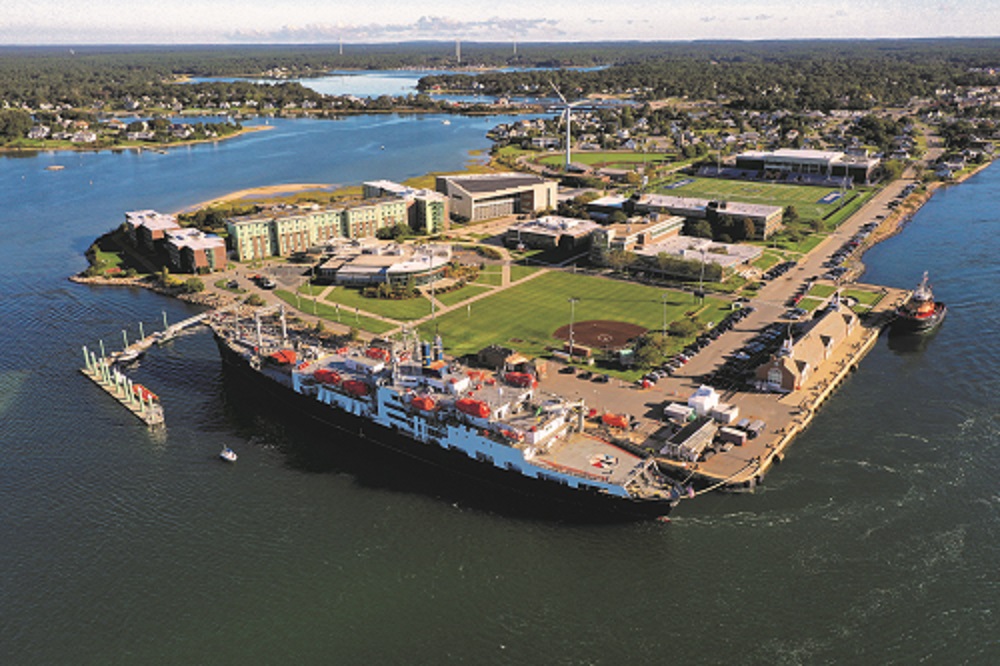
December 8, 2021: Massachusetts Maritime Academy Trains More Than 120 Individuals To Work in Clean Energy Industry
Massachusetts Clean Energy Center Blog
Guest blog by Capt. Mike Burns, Executive Director of the Academy’s MCRE

The United States Department of Energy estimates 43,000 new jobs will be created in the offshore wind market by 2030. A Massachusetts Clean Energy study estimates that offshore wind farms will create 2,000-3,000 jobs and generate economic impacts between $1-2 billion in the region.
Massachusetts Maritime Academy (MMA) saw a unique opportunity to be involved in this growing industry and thought one of the most important ways we could contribute would be by training the men and women who will be on the front lines of this new industry. We’re helping prepare the workforce for clean energy opportunities that are coming to our region by delivering key training for personnel who will build the windfarms that will power the Northeast region with clean energy.
In 2018, MMA received funding from the Massachusetts Clean Energy Center to build our Global Wind Organization (GWO) Training Center at the Academy’s Maritime Center for Responsible Energy (MCRE). The GWO Training Center consists of waterfront Crew Transfer Training Facility (CTTF), a 25-foot Crew Transfer Training Vessel, and a Working at Heights training facility. At the end of 2019, MMA, in cooperation with RelyOn Nutec, began offering the globally recognized GWO Basic Safety Training (BST) at our Buzzards Bay campus, becoming the first facility in the nation to offer all five modules of GWO BST for Offshore Wind.
The GWO BST course, developed by RelyOn Nutec, an established leader in the offshore wind industry, consists of five modules: Working at Heights, First Aid, Fire Awareness, Manual Handling, and Sea Survival. The modules are taught by MMA instructors whose goal is to have participants gain an awareness of the hazards encountered when working in the wind industry and how to control and mitigate against those hazards.

Currently, there are three windfarms in various stages of development that will be built in the Atlantic Ocean approximately 20 miles south of Nantucket and Martha’s Vineyard. The developers of these windfarms are all requiring that anyone working on these sites must complete Basic Safety Training.
Working with RelyOn Nutec is a perfect partnership in developing and delivering this type of training. RelyOn Nutec is the subject matter expert in this area, their instructors have a deep understanding of working in high-risk environments and have first-hand experience of the potential risks in the renewables industry. Our MMA staff has the experience to deliver these critical courses, ensuring quality training to the people who will be out on open water building the wind turbines.
One of the first organizations to take advantage of the MMA training is the Pile Drivers and Divers Local 56, the marine construction local of the North Atlantic States Carpenters Union. Union leaders understand the opportunity to work in the clean energy industry is great for their members but also realize that there are occupational risks. They know that safety must be at the forefront of each member’s mind, and the training we’re delivering is helping members understand and prepare for the hazards they may face.
The Massachusetts Clean Energy Center is sponsoring Local 56 members’ participation with a $100,000 Workforce Development Grant. The North Atlantic States Carpenters Training Fund (NASCTF) has co-sponsored training with an addition $50,000. So far, 39 members have graduated from the course, including three at the instructor level, and an additional 24 individuals are scheduled to participate in October and November.
In addition, 24 members of the International Association of Bridge, Structural, Ornamental and Reinforcing Ironworkers Local 7 (Boston) and Local 37 (Providence) as well as employees of Vineyard Wind, Orsted, Dominion Energy, GE, and Siemens Gamesa have all participated in GWO Basic Safety Training at MMA.
Training consists of both classroom and practical exercises. Participants acquire knowledge and confidence by learning the practical skills they need through practice. Students learn the proper use of personal protective equipment, emergency equipment, and procedures with the end result being able to appropriately respond in the event of an emergency.
Every group that has gone through the training has been exceptional. The participants are highly skilled professionals who understand the importance of safety in this industry. It’s our honor to help them prepare for the next phase in their careers.

November 29, 2021: The First U.S. Offshore Wind Farm Could Be a Lifeline for Struggling New England Cities
BY ALEJANDRO DE LA GARZA/MARTHA'S VINEYARD, MASS.
NOVEMBER 29, 2021 10:23 AM EST
As many of New England’s industrial cities fell into decline in recent decades, the wealthier residents of Martha’s Vineyard, a regional center of affluence and privilege, have gotten richer, building and rebuilding beachfront megamansions. But their good fortune has hardly benefited everyone on the island, where economic inequality has run rampant. For Michael Friedman, a 55-year-old IT engineer, rising prices driven by rich residents’ expanding wealth have made it harder to stay and raise his family on the tree-covered Massachusetts island where he grew up. “What can you say?” he says, driving past the Obama family’s Vineyard property in late October. “We’ll try to make a go of it.”
Now, 15 miles off the island’s coast, a new green-energy project is getting under way that many hope will begin to spread the wealth. In a matter of months, workers will begin erecting 837-ft.-tall wind turbines for Vineyard Wind, the country’s first commercial-scale offshore wind farm. When fully operational, the plant will generate 800 megawatts of electricity, enough to power 400,000 homes. More than a dozen other East Coast offshore wind projects are awaiting government approval, and the plans portend an entirely new clean-energy industry—with thousands of new, high-paying jobs to go along with it.
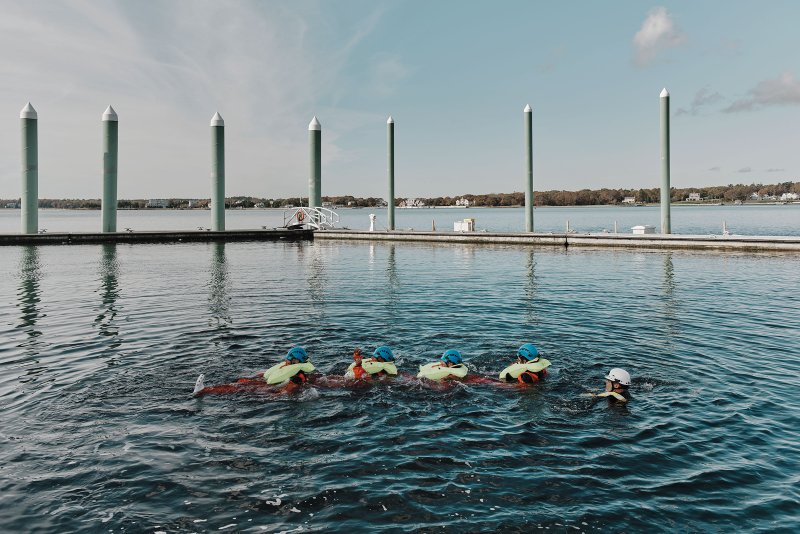
But there’s a catch: hardly any U.S. workers have experience building and operating offshore turbines. Community organizations, unions and colleges are now filling that gap, launching training programs in a broad effort to create a new American offshore wind workforce. For organizations that have plowed considerable time and money into education programs for projects that don’t yet exist, these efforts are something of a leap of faith. The same is true for the workers who are undergoing those courses, hoping that a brand-new, eager-to-hire clean-energy industry will await them on the other side.
Friedman is one of those would-be wind workers. For months he’s been taking online classes for an offshore-wind-tech certification through ACE MV (Adult & Community Education Martha’s Vineyard) and Bristol Community College. He’s taking the course partly for personal interest, though he says he would consider switching careers if the opportunity came up. But with Vineyard Wind more than a year and a half from producing power, he’s far from certain that the work he and his fellow students are doing will result in a job. Offshore wind has been just over the horizon for decades, with endless legal battles grinding a previous Massachusetts venture, Cape Wind, to a halt in 2017. Things are likely to be different with Vineyard Wind—the project is located farther offshore and hasn’t faced the same intensity of local backlash—but many, like Friedman, remain skeptical. “I’ll believe it when I see it,” he says.
Yet others are diving in. On a brisk November morning, a handful of Piledrivers Local 56 workers shivered as they floated in the ice-cold water of Buzzards Bay, Mass., for a training session. During an earlier safety lecture, one of the workers, Nick Fileccia, had made a few wisecracks. Now, after the piledrivers donned bright orange ocean survival suits and slipped off a dock into the blue-gray water, he was dead serious. “Man, that water,” he said after emerging from 30 minutes in the frigid bay, during which he and his classmates had to right an overturned life raft. “I was all jokes until we got in that water.”
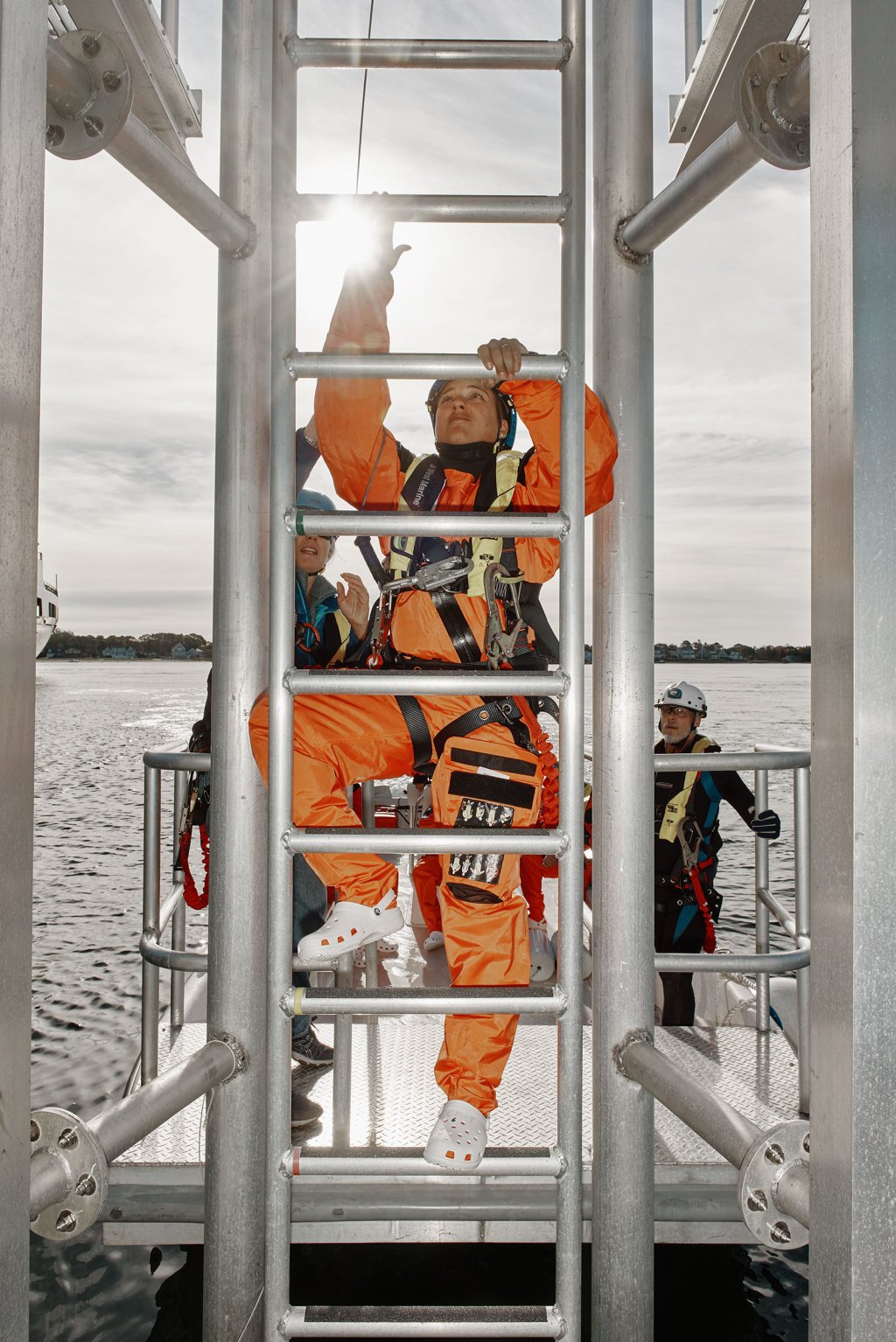

That exercise was part of a Global Wind Organisation (GWO) training program designed to prepare millwrights, ironworkers and other tradespeople for the unique challenges involved in doing their jobs at sea. Besides sea–survival modules and classroom components, it includes portions on working at heights, first aid and fire safety. “A lot of it is teaching them skills that we hope that they never have to use,” says Mike Burns, director of the Center for Maritime and Professional Training at the Massachusetts Maritime Academy. “Practicing an emergency escape from a wind turbine is something you hope you never have to do in real life, but you’re glad that you’ve been trained how to do it.” The academy is currently one of the only places in the U.S. where workers can get this type of training, but it may soon be offered at many more locations up and down the East Coast.
Labor organizations are among the largest supporters of such programs. The Eastern Atlantic States Regional Council of Carpenters, for instance, is planning to upgrade a training facility in New Jersey with a wind–turbine mock-up, cranes and other equipment. “We’re in it for about $700,000, $800,000 so far,” says William Sproule, the organization’s executive secretary-treasurer. Meanwhile, the New York State Building & Construction Trades Council is planning to increase class sizes in existing training programs to up the number of workers it can prepare for anticipated local offshore wind projects. “We are really at the very beginning, the precipice, of offshore wind on the East Coast,” says union president Gary LaBarbera. And as Vineyard Wind gets under way, the Massachusetts Building Trades Council, another union, plans to set up a kind of offshore worker training pipeline, starting newer workers on the onshore portions of the project, like building electrical substations, and then moving them out to sea. “That’s the way you develop a stable workforce and a skilled workforce for this industry,” says union president Frank Callahan.
Meanwhile, Bristol Community College, where Friedman is currently studying, is sinking $10 million into launching what it’s calling the National Offshore Wind Institute. Scheduled to open in 2022, the facility will focus on training workers (rather than teaching courses for college credit) and will offer programs on other aspects of the offshore wind industry, like finance and insurance. Jennifer Menard, the college’s vice president of economic and business development, says her goal is to help replicate the economic investment that offshore wind spurred in cities like Cuxhaven in Germany and Hull in the U.K. Facilitating such a renewal, Menard says, means stepping up investments in education to fill gaps in the current U.S. workforce. “I saw what offshore wind could bring,” she says. “It was just an opportunity that we wanted to be ready for.”
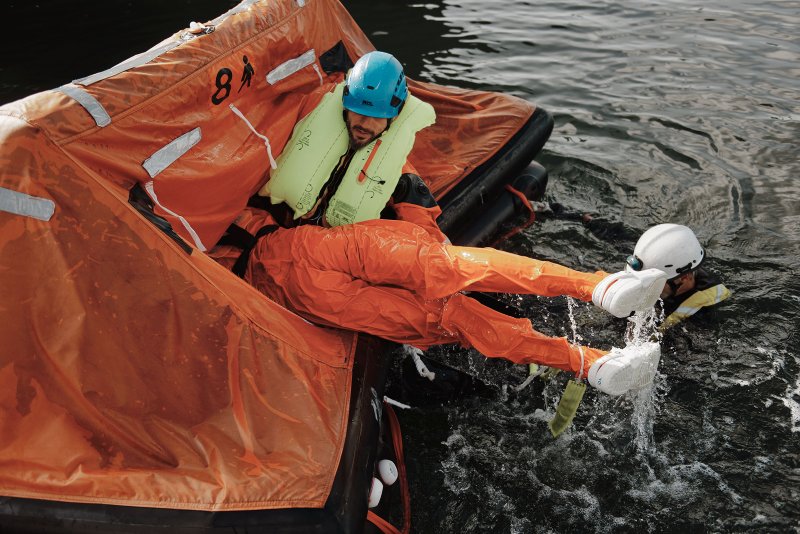
Europe, where offshore wind is a long-established industry, may also offer an ideal training ground for U.S. workers. Orsted, a Danish offshore-wind giant, is bringing more than a dozen American workers to train at its European sites for months at a time. The idea, says Orsted’s head of North America operations Mikkel Maehlisen, is to create an elite group of workers who can in turn train more Americans as the company’s U.S. projects—like a planned 700–megawatt wind farm off Rhode Island—get under way.
Despite this flurry of training investment, some U.S. labor leaders worry that as the country decarbonizes, an expansion of offshore wind won’t provide as many jobs as its proponents hope, especially compared with the expected loss of labor-intensive fossil-fuel power-plant projects. David Langlais, business manager of Ironworkers Local 37 in Rhode Island, is particularly concerned about the fact that many offshore-wind–related jobs come from manufacturing turbine components—an industry based largely in Europe—rather than erecting and maintaining such equipment offshore. “There’ll be a tremendous amount of hours that the American workforce will lose out on,” he says.
Langlais wants offshore–wind manufacturers like GE, which is supplying turbines to the Vineyard Wind project and makes many of its components in France, to produce turbines and similar gear domestically—a goal offshore-wind developers say they support. Orsted, for instance, has tapped Local 37 iron-workers to help erect a huge steel structure at the port in Providence, R.I., to be used to manufacture bases for the company’s offshore turbines. And despite his reservations about offshore wind, Langlais says his union is committed to the green-energy transition.
“I’m not a scientist, but clearly we’re getting more hurricanes, we’re getting worse storms, it’s getting warmer,” Langlais says. “There’s obviously something to this climate change, and it has to do with carbon emissions. So we have to do the right thing.”

Back on Martha’s Vineyard, Miles Brucculeri, 44, is studying hard despite his doubts about future employment. He’s worked as a surfing instructor for the past two decades but isn’t sure how much longer he’ll be able to swim the five daily miles such work requires, and he’s been frustrated by a lack of local work opportunities with health benefits during the long off-season. “You’re either serving rich people in this kind of fake, rich-people economy, or there’s not much out here,” he says. At the moment, Brucculeri is 11 months into Bristol Community College’s two-year offshore-wind education course. By the time he finishes, Vineyard Wind’s offshore turbines will still be at least six months from producing power. Even after they go online, there’s no guarantee he’ll be hired as a technician. But in order for offshore wind to take off in the U.S. as it has elsewhere in the world, more people like him will have to take the plunge. “The opportunity came up, so I took it,” Brucculeri says. “I don’t know where it’s gonna lead.”
November 8, 2021: Massachusetts Maritime Academy Attends Recent ACP Offshore WINDPOWER Conference and Exhibition
BUZZARDS BAY, BOSTON, MA, ISSUED NOVEMBER 8, 2021…Massachusetts Maritime Academy (MMA; www.maritime.edu), a top-ranked university with seven undergraduate degree programs focusing on science, engineering, technology, math, and business that blend academics and experiential learning, recently attended American Clean Power’s Offshore WINDPOWER Conference and Exhibition, held in Boston last month.
The American Clean Power Association enables the transformation of the U.S. power grid to a low-cost, reliable and renewable power system. By uniting the power of wind, solar, transmission and storage companies and their allied industries, both public and private, ACP is championing policies that enable the continued and aggressive growth in renewable energy in the United States.
The recent conference discussed the significance of offshore wind for America’s energy needs, as well as highlighted the role the industry can play in strengthening the economy and creating jobs as well. The event has cultivated a dedicated and thriving global community of top developers and experts.
“This year’s Offshore WINDPOWER Conference and Exhibition did not disappoint,” said Capt. Michael R. Burns, Jr., executive director of the Maritime Center for Responsible Energy at the Massachusetts Maritime Academy. “The event proved incredibly informative and thought-provoking, and allowed us to return to the Academy with new knowledge for our students as well as valuable connections as we prepare our students for their next steps in this field.”
Photo (left to right): Derek Lambaise of Pembroke, George Morant of Holliston, Logan King of Mattapoisett, Adam Veloso of Dartmouth, and Nathan McDermott of Middleboro.
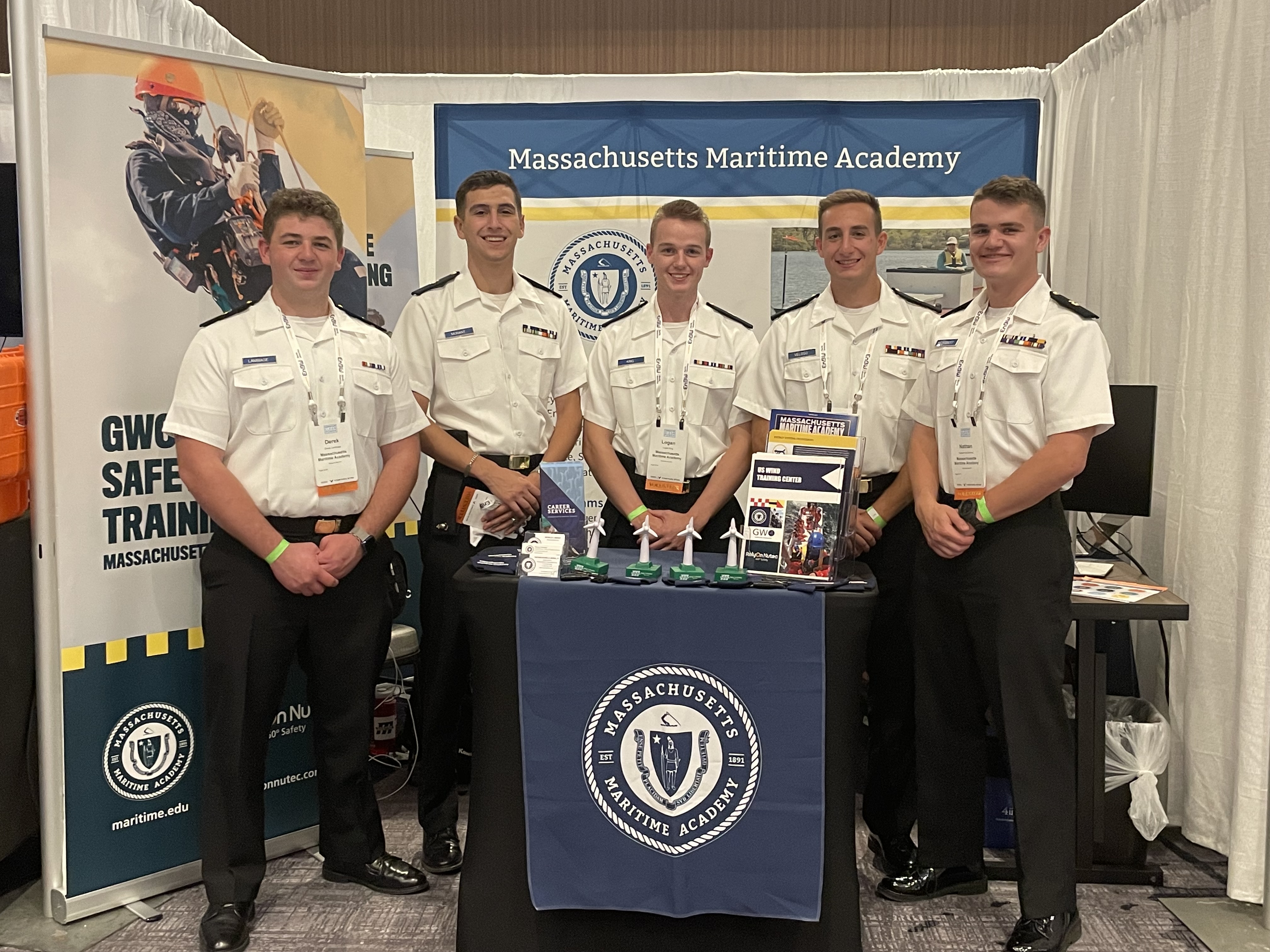
October 26 2021: Massachusetts Maritime Academy Training Helps Fuel the Future of Renewable Energy
Record growth continues for renewable energy sources, with Offshore Wind (OSW) nearly quadrupling in size over the past decade. The United States Department of Energy estimates 43,000 new jobs will be created in the offshore wind market by 2030. The growth potential is exponential. There are 15 projects in the U.S. offshore pipeline that have reached the permitting phase, and eight states have set offshore wind energy procurement goals for a total of 39,298 MW by 2040.
This expanding energy source cannot sustain its growth and viability without strict safety measures and first-rate training for the individuals who will be building the infrastructure for the developing OSW industry. Windfarm developers are making it clear that anyone working on their sites must complete Basic Safety Training (BST).
The Massachusetts Maritime Academy is at the forefront of developing facilities and programs focusing on these critical needs. In 2018, Massachusetts Maritime Academy received funding from the Massachusetts Clean Energy Center to build a Global Wind Organisation (GWO) Training Center at the Academy’s Maritime Center for Responsible Energy (MCRE). The GWO Training Center consists of waterfront Crew Transfer Training Facility (CTTF), a 25-foot Crew Transfer Training Vessel, and a Working at Heights training facility. At the end of 2019, MMA began offering the globally recognized GWO BST at its Cape Cod campus, becoming the first facility in the nation to offer all five modules of GWO BST for Offshore Wind.
The GWO BST course, developed and offered in partnership with RelyOn Nutec, an established leader in the offshore wind industry, consists of five modules: Working at Heights, First Aid, Fire Awareness, Manual Handling, and Sea Survival. The modules are taught by Massachusetts Maritime Academy instructors whose goal is to have participants gain an awareness of the hazards encountered when working in the wind industry and how to control and mitigate against those hazards.
Already Massachusetts Maritime Academy has trained more than 120 individuals in key skills that help workers keep safety top of mind and prepare them for the hazards they may face. One of the first organizations to take advantage of the MMA training is the Pile Drivers and Divers Local 56, the marine construction local of the North Atlantic States Carpenters Union. The Massachusetts Clean Energy Center is sponsoring Local 56 members’ participation with a $100,000 Workforce Development Grant. The North Atlantic States Carpenters Training Fund (NASCTF) has co-sponsored training with an addition $50,000. So far, 39 members have graduated from the course, including three at the instructor level, and an additional 24 individuals are scheduled to participate in October and November.
In addition, 24 members of the International Association of Bridge, Structural, Ornamental and Reinforcing Ironworkers Local 7 (Boston) and Local 37 (Providence) as well as employees of Vineyard Wind, Orsted, Dominion Energy, GE, and Siemens Gamesa have all participated in GWO Basic Safety Training at Massachusetts Maritime Academy .
Training consists of both classroom and practical exercises. Participants acquire knowledge and confidence by learning the practical skills they need through practice. Students learn the proper use of personal protective equipment, emergency equipment, and procedures with the end result being able to appropriately respond in the event of an emergency.
Every group that has gone through the training has been exceptional. The participants are highly skilled professionals who understand the importance of safety in this industry. It’s Massachusetts Maritime Academy ’s honor to help them prepare for the next phase in their careers.
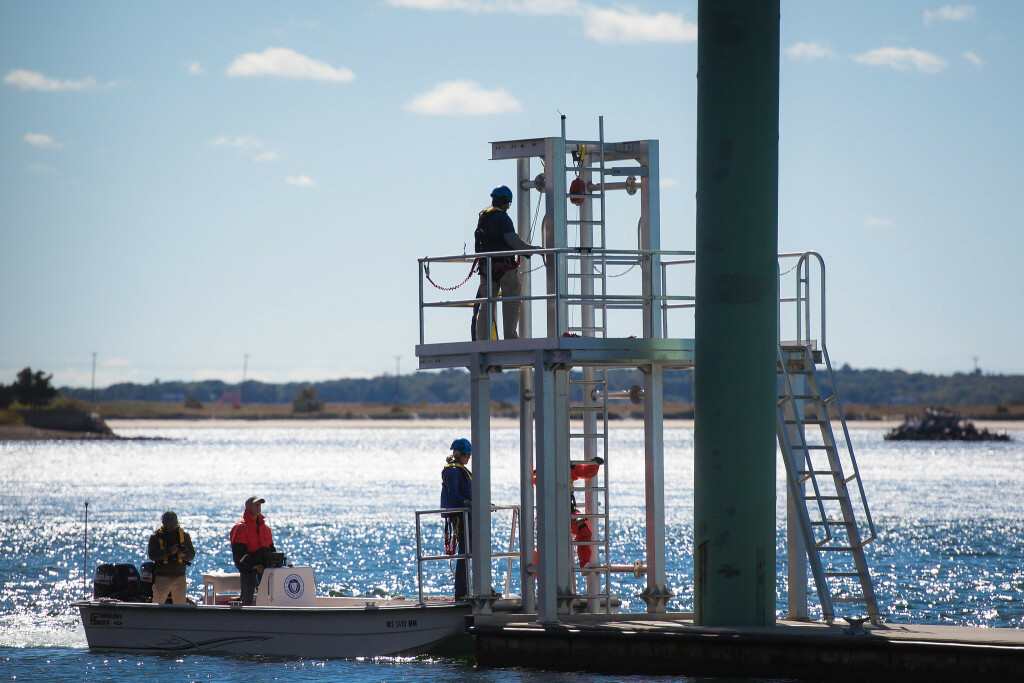
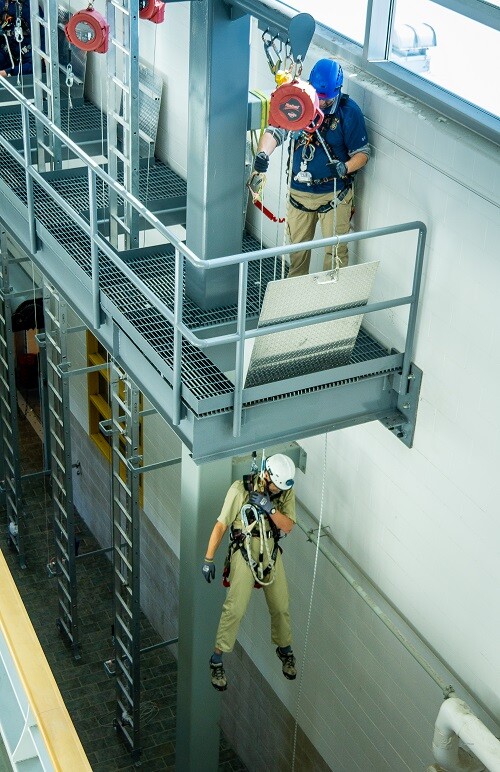
October 21, 2021: Harnessing the wind, Blowing away the competition
Change is in the air with the offshore wind industry ascending. Will Massachusetts be ready with the workforce needed?
By Doug Fraser, Cape Cod Times, Published 5:00 AM EDT Oct. 21, 2021 Updated 5:00 AM EDT Oct. 21, 2021
This story is part of a series about the burgeoning offshore wind industry and the economic potential it offers to Southeastern Massachusetts and the Cape and Islands. It is powered by the Solutions Journalism Network and is dedicated to delivering solution-oriented stories about how the region can overcome problems and obstacles to fully embrace the opportunity this new industry offers.
NEW BEDFORD — A few years ago when she landed in England, Jennifer Menard told the immigration agent at the airport that she was headed to Hull.
"He said 'Why?'" Menard recalled. "'It's in the middle of nowhere and it's an industrial city that's lost its fishery.'"
Menard, vice president of business and economic development at Bristol Community College, was on a fact-finding tour of British port cities that had been transformed by the offshore wind industry.
"When he said that, I was wondering if that's what they said in Boston about New Bedford?" she said.
What she saw in Hull was a thriving city that had reinvested revenue from the wind industry into rebuilding the city and training a workforce. Some of the people she met in England and Europe are here now in Massachusetts and Rhode Island working as consultants.
"They are saying, 'It's (the wind industry) coming, and you guys have to be ready," Menard said. In a relatively short time, Bristol Community College has been transformed into the hub of wind industry safety training and education.
"When we talk about how do we make sure our residents are working, this is so much an industry that will help us with that," she said.
When the Biden administration unveiled its offshore wind plan in March it set a goal of installing 30 gigawatts of offshore wind power by 2030. To put that in perspective, it took more than three years for Vineyard Wind 1 to obtain the federal permits needed to begin construction on an 800-megawatt wind farm 12 miles south of Martha’s Vineyard.
A gigawatt is equal to 1,000 megawatts and Biden’s plan — established through an executive order — requires building the equivalent of nearly 38 utility-scale wind farms the size of Vineyard Wind 1, which will have 62 turbines, over the next decade.
Offshore wind farms are key to the state's carbon emissions reduction plan. Vineyard Wind says its 800-megawatt facility will power over 400,000 homes, with emissions reductions equivalent to removing 325,000 vehicles from roadways.
And these projects will create new jobs — thousands of them.
Given the realities of an economy struggling to emerge from a global pandemic, the Biden plan is focused on jobs. An offshore wind industry on the scale he envisions would create 44,000 jobs to construct, operate and maintain the facilities and 33,000 support jobs in manufacturing, supply chain and affiliated industries in local communities.
But the majority of those jobs will be in manufacturing.
In its 2021 Clean Energy Labor Supply report, American Clean Power estimated that manufacturing would account for over 80% of all full-time equivalent job years created in the offshore wind industry between now and 2030.
FTE job years are used as a measurement because they can account for both full- and part-time employment. The labor report showed that, while three in 10 jobs would be in construction, manufacturing will create five in 10 jobs.
An urgent need to train workers for offshore wind jobs
The U.S. offshore wind manufacturing and supply chain sectors, however, are still largely undeveloped. With construction already underway on Vineyard Wind 1 there is an immediate need to train thousands of workers in skills such as welding and electrical work. In a marine environment, working hundreds of feet above the ocean, safety training is also critical.
Massachusetts officials say they have laid the foundation for both during the years it took for Vineyard Wind to reach the construction stage last spring and that the local workforce will be ready.
“I have every confidence in the Massachusetts Maritime Academy, the state community college system and the University of Massachusetts system that we will have people appropriately trained,” state Rep. Sarah Peake, D-Provincetown, said referring to safety and skill training programs that have been set up using state grants.
But, even in pre-pandemic times, labor shortages were predicted by clean energy experts, particularly in the land-based wind industry. In a 2019 National Renewable Energy white paper on the land-based wind industry's hiring, training and future needs, 39% of employers surveyed said they were having some or great difficulty finding construction laborers and 33% were having problems finding wind technicians.
Those numbers doubled and tripled in professional categories such as engineering, regulatory, design and research.
American Clean Power’s 2021 Clean Energy Labor Supply analysis found that wind turbine technicians was one of the more significant labor shortages with over 12,000 needed in the next decade.
“We know that there are going to be labor needs,” said Bruce Carlisle, managing director of Offshore Wind at the Massachusetts Clean Energy Center. Massachusetts has been working on community-level recruitment among the trades, particularly with outreach “to create a diverse, equitable and inclusive offshore wind workforce.”
In August, the center announced $1.6 million in workforce training grants to help people of color, women and other minorities get the training they need to enter the offshore wind workforce.
The state already has a highly skilled union workforce and unions have already started their training for the offshore wind industry, Carlisle said.
“We don’t see any immediate shortages for our project,” said Will Cotta, supply chain manager for Mayflower Wind, a Boston company that wants to build a wind farm 30 miles south of Martha's Vineyard and 20 miles south of Nantucket.
Massachusetts officials said the state is out ahead of other states along the East Coast when it comes to workforce training.
“As these projects are being deployed at the pace they are being deployed, and with a limited amount of training opportunities and real-world experience out there … folks who have participated in the construction and operations of our projects are going to have a shot at taking on roles in other projects up and down the Eastern seaboard,” Massachusetts Secretary of Energy and the Environment Kathleen Theoharides said.
Offshore wind workforce will be 'an American workforce'
On Sept. 15, Vineyard Wind was notified that lenders had agreed to finance the project and its contractors could finally start buying materials and hiring.
“A lot of the workforce will be an American workforce,” Lars Pedersen, Vineyard Wind CEO, said. Vineyard Wind is equally owned by Copenhagen Infrastructure Partners headquartered in Denmark and Avangrid Renewables, a U.S. company.
There are various projections on how many people will work directly on the construction and operations and maintenance of America’s first utility-scale offshore wind farm. When the company learned it had its final federal approval last spring, it said Vineyard Wind 1 would create 6,000 jobs, although it did not have a breakdown on those jobs.
A 2017 study by the former UMass Dartmouth Public Policy Center, however, estimated this first 800-megawatt phase of Vineyard Wind would result in between 1,076 and 2,120 full-time workers over a 25-year period, with most of those workers employed for a few years in the development and construction phases and around 80 employed long-term in operations and maintenance jobs.
The Massachusetts Clean Energy Center’s “2018 Massachusetts Offshore Wind Workforce Assessment” had a similar estimate. They calculated the project would result in 1,086 to 1,665 FTE years in project development and construction. They also calculated there would be 70 to 128 FTE job years annually in operations and maintenance. The relatively few people in operations and maintenance jobs accounted for 67% of the overall job years.
The clean energy industry likes to use full-time equivalent job years as a way to account for short-term and long-term jobs. A job year is basically one full-time employee working for a year. But 30 job years is not 30 jobs. It could be one person working for 30 years. It tends to confuse the public and inflate the numbers.
“To some extent, there’s been some exaggeration,” said Elise Rapoza, assistant director for corporate engagement at the University of Massachusetts Dartmouth and the former project manager for the Offshore Wind Economics Project at UMass Dartmouth’s Public Policy Center.
Offshore wind will fuel jobs in other economic sectors
Direct employment, those involved with the planning, construction, operations and maintenance of each wind farm are what most people consider job creation directly attributed to that project.
Rapoza explained that job creation estimates often include data from computer models used to measure the full impact of a project on the local economy right down to the hospitality worker serving coffee to a person who works at a business supplying parts.
While Pedersen wouldn’t say how much his company plans to spend on materials, he characterized it as a $3 billion project. Computer models look at the flow of money beyond direct payroll. They estimate indirect effects including job creation by companies in the supply chain due to purchases of goods and services by the wind farm and its contractors.
Economists also estimate job creation due to induced effects, when those employed in supply chain businesses make personal purchases that affect the business and employment in their community and beyond.
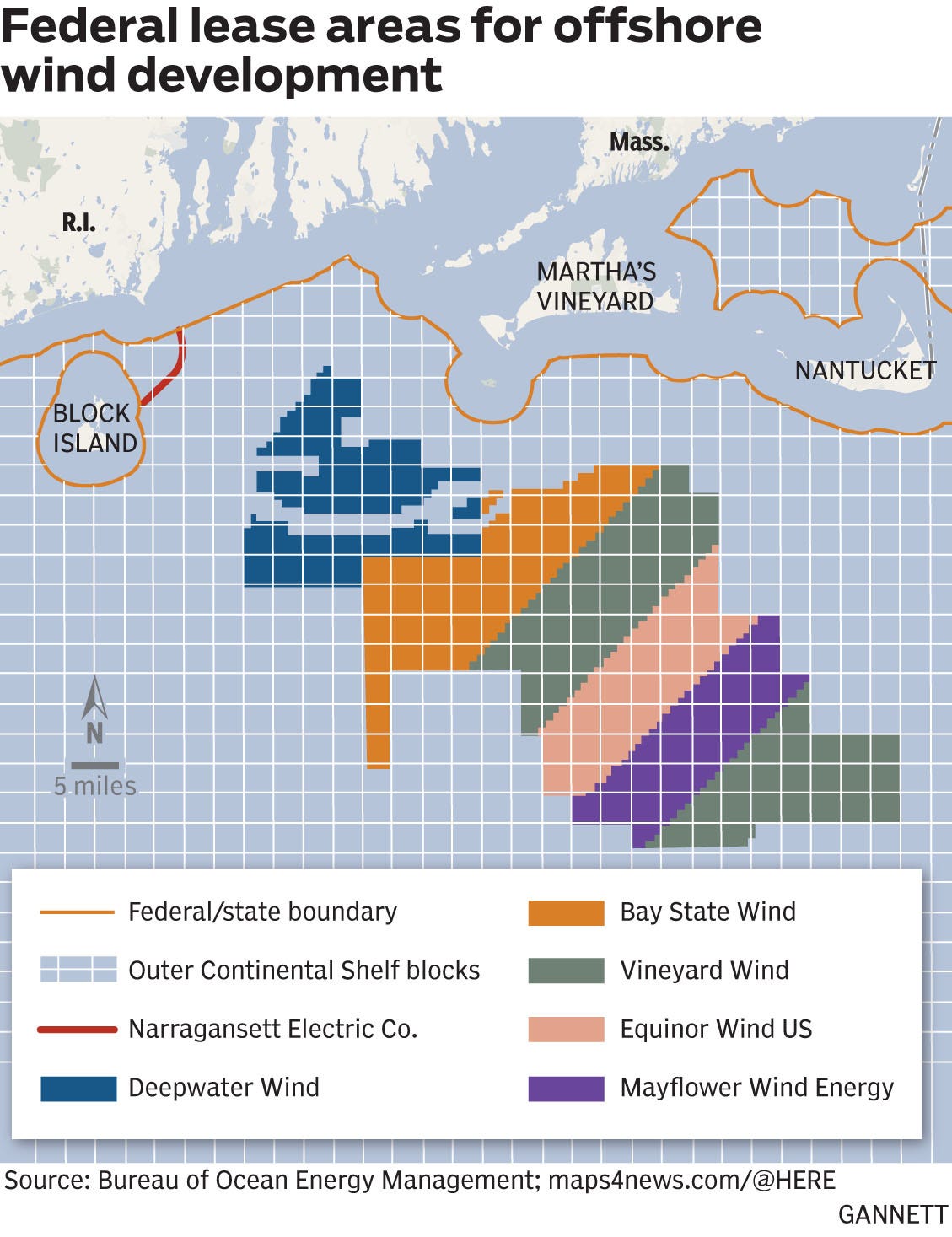
Federal lease areas for offshore wind developments off Martha's Vineyard and Nantucket. GANNETT
Massachusetts awarded Mayflower Wind a contract to produce 804 megawatts of power in the second round of power contract bids. The company submitted a bid for a wind farm with up to 1,200 megawatts in the third round, which will be decided sometime in December, spokeswoman Joyce McMahon said. Both leases are in the Massachusetts lease area on adjacent tracts, about 30 miles south of Martha’s Vineyard.
The 1,200-megawatt proposal would result in 14,310 full-time equivalent job years, she said, with nearly 7,900 directly attributable to planning, construction, operations and maintenance. Nearly 11,000 of those job years would occur during the decades of operations and maintenance and they estimated that nearly 2,300 job years would occur in supply chain businesses and over 4,100 in induced impacts to shoulder businesses.
Offshore wind offers high-paying jobs
Still, whether it’s planning, construction or ascending hundreds of feet above the ocean for maintenance work, offshore wind jobs are high-paying jobs that could help not only the New Bedford area but might even out the Cape’s boom and bust seasonal economy, said Rapoza, co-author of a 2017 UMass study that looked at the economic impact of the first phase of Vineyard Wind.
That report estimated that the average wage during construction was between $88,000 and $96,000. Operations and maintenance jobs averaged over $99,000.
The operations and maintenance phase, while requiring far fewer employees, still contributes significantly to the local economy. UMass reported that Vineyard Wind estimated it would spend nearly $200 million on materials and services from Massachusetts suppliers, including $107 million in Southeastern Massachusetts.
Supply chain spending would create an additional 1,140 to 1,798 job years during the construction phase, and the additional payroll spending impacts create another 1,145 to 1,573 jobs. This could pump between $702 million and $1.06 billion into the state economy during the construction phase, although that would only last a few years for each project.
In analyzing Vineyard Wind, the UMass policy center found that the 1,706 to 2,120 workers employed during planning, construction and operations and maintenance would have a payroll of between $120.3 million and $152.5 million with an average wage of between $77,671 and $85,021.
A commitment to hiring local residents for offshore wind projects
Both Vineyard Wind and Mayflower Wind have expressed their commitments to hiring locally. Mayflower Wind Supply Chain Manager Will Tott said his company committed to hiring 75% of their workforce locally for its latest state power contract bid. UMass found that most of the jobs would be filled by people living in Southeastern Massachusetts.
The remaining workers will likely come from other states and from Europe, where the wind energy industry is mature.
Payroll and consumer spending during the construction phase of Vineyard Wind 1 could add between $702 million and $1.06 billion to the state's economy, according to the Public Policy Center. And Vineyard Wind is only the first of several wind farms that must be built to reach the state’s 5.6 gigawatts goal.
That employment would mean a lot to Southeastern Massachusetts communities. New Bedford has a per capita income of $25,829, according to U.S. Census data from 2015-2019 as compared to nearly $44,000 statewide and $44,500 in Barnstable County.
Over 20% of New Bedford residents are listed as persons living in poverty by the Census report, compared with the state average at 9.4% and Barnstable County at 6.5%. Additionally, Cape Cod Commission data showed that the percentage of households earning less than $35,000 annually grew from 2.9% in 1990 to 18% by 2018.
But to meet those workforce demands, thousands of people need to be trained — and quickly. In August, the international Global Wind Organization (GWO), an industry-owned nonprofit that developed offshore wind safety standards, forecast that 25,000 workers in construction and operations and maintenance needed basic safety training over the next five years to meet the offshore wind power construction demands — or 9.1 gigawatts — on the East Coast anticipated by 2025.
There are two levels of training required: basic skills such as welding, electrical work, construction, engineering, etc., for construction or wind technician training for maintenance and operation after the turbines are built; and safety training, learning how to work safely in the marine environment to meet an international industry standard set by the GWO.
“I would say that on the workforce training side of all of this, we are ahead of the game,” Theoharides said.
New Bedford Mayor Jon Mitchell said that despite the setbacks and unpredictability of the permitting process, New Bedford, Southeastern Massachusetts and the state have been laying the groundwork in worker training and education.
State grants fund offshore wind training facilities, programs
Since 2009, the Massachusetts Clean Energy Center, a quasi-public state agency, has been working on bridging gaps between ideas and implementation in the clean energy industry. Its money comes from the Massachusetts Clean Energy Trust Fund, which is funded by a 29-cent-per-month surcharge on consumer electric bills.
To help with the creation of a skilled, and diverse, workforce, the clean energy center launched its Offshore Wind Workforce Grant program in 2019 to jumpstart training programs with $2.2 million in grants over the past two years to community colleges, continuing education, unions, Massachusetts Maritime Academy, UMass Amherst, UMass Lowell and a company specializing in virtual reality training.
For the past couple of years, the maritime academy, Bristol Community College and UMass Dartmouth have been operating under a memorandum of understanding as Connect4Wind, in which they collaborate on developing a curriculum for offshore wind training.
Given the 3½ years it took for a dozen federal agencies to review Vineyard Wind’s construction and operation plan and issue the final approval, actual training has been mostly on hold.
'We didn't know anything'
In 2018, the college co-sponsored a forum with representatives from Vineyard Wind Orsted, a multinational company headquartered in Denmark, and British Consul General Harriet Cross, representing Europe’s top offshore wind country.
“We found out right away we didn’t know anything,” Menard, of Bristol Community College, said.
What they did find was that all the offshore wind companies wanted their employees and job candidates trained to Global Wind Organization safety standards and that these companies required refresher courses in safety at annual or two-year intervals.
Bristol Community College partnered with the training arm of the shipping giant Maersk and leased a former seafood packaging facility on the New Bedford waterfront. It's undergoing a $10 million overhaul to convert it into the National Offshore Wind Institute, with an emphasis on safety training. The college also has two academic programs: an engineering associate's degree in offshore wind power technology and an offshore wind power technician certificate. The facility itself won’t be ready until 2022.
“It’s a 30,000-square-foot state-of-the-art training facility,” said Menard, adding that it will combine classrooms and labs with simulators, climbing equipment and a training tank that will simulate sea conditions.
The college is also conducting innovation and entrepreneurship training geared to wind industry supply chain business opportunities, and courses to help established businesses in the financial and insurance sectors learn how to work within the new industry.
“These are physical and mentally demanding jobs. To work out there (offshore) takes a certain person,” Menard said. “This is not for people who are nervous about heights or going out on a boat and waiting for two hours for the seas to calm down so that you can board a platform and work.”
“It’s a long, bumpy ride out,” said Michael Burns, executive director of the Massachusetts Maritime Academy’s Maritime Center for Responsible Energy. “You climb 300 to 400 feet and you’re exhausted by the time you get up there.”
Massachusetts Maritime Academy sees a lot of overlap in the courses it teaches and what’s needed in offshore wind. It’s why they committed to offshore wind technical training labs as part of a $50 million renewable energy initiative unveiled last summer.
Both Vineyard Wind and Mayflower Wind have contributed money toward training grants. Vineyard Wind created Windward Workforce with $2 million to recruit and train Massachusetts residents, particularly those from Southeastern Massachusetts.
Vineyard Wind said that within five years of the wind farm becoming operational, its operations and maintenance staff would all be Martha’s Vineyard residents.
“I know we’re going to have an American workforce,” said Menard, who also thinks the supply chain and manufacturing will ultimately be local rather than imported from Europe or Asia. “They (European-owned offshore wind companies) know it’s important to the way we (Americans) feel about them.”
Some offshore wind jobs will go to union workers
President Biden promised that the jobs created in the offshore wind industry would be good-paying union jobs. Rapoza wasn’t sure where that promise originated. The 2021 American Clean Power labor report estimated union representation in the clean energy sector at 9.5%. The highest percentage of union jobs were in high-skill positions such as electricians at 31% and metal fabricators and fitters at 21%.
But experts said that offshore construction jobs, in particular, will likely be unionized.
“This labor force is well-known, sophisticated, capable. They are well-trained, keep safety and timelines in mind,” said Jeff Danielson, Central Region Director for State Affairs at the American Clean Power Association. “Companies have had a very good working relationship with them over the years.”
Unions will supply most of the workers through negotiated contracts known as project labor agreements. In July, Vineyard Wind signed the first such agreement in the U.S. with the Southeastern Massachusetts Building Trades Council, which represents skilled trades such as electricians, carpenters and pipefitters. The agreement covered around 500 union workers. According to a story in Energy News Network, the deal came with an assurance that 51% of workers hired would come from counties in Southeastern Massachusetts.
Menard said it’s misleading to only talk about construction jobs as short-term since there will be development and construction of new wind farms in Massachusetts and along the East Coast for decades.
Contact Doug Fraser at dfraser@capecodonline.com. Follow him on Twitter: @dougfrasercct.
Meet the team
- Reporting Doug Fraser
- Digital production and design Jerry Boggs
Published 5:00 AM EDT Oct. 21, 2021 Updated 5:00 AM EDT Oct. 21, 2021
October 13, 2021: Offshore wind is America's new industry. Who will build it?
Offshore wind is America's new industry. Who will build it?
Billy Vietze still feels guilty.
He worked on a natural gas project near Boston several years ago, and he wants to make it up to the planet.
Be the first to know about WBUR's soon-to-come environmental newsletter. Sign up now.
So when his union signed a deal this summer to build the first offshore wind farm in America, he packed a bag and headed for Cape Cod. Soon he was clicked into a harness and ready to climb.
Looking up an 18-foot ladder at the Massachusetts Maritime Academy, he watches ironworkers from across New England stage a rescue high off the ground. They use pulleys and ropes to lower union members down the kind of the ladders found inside turbine shafts.
Construction workers need to complete the safety course to land one of the 500 union jobs on Vineyard Wind, a 62-turbine project 15 miles south of Martha’s Vineyard.
For Vietze, it’s more than a job. It is a chance to clear his conscience.
“Everybody knows there's a finite amount of fossil fuels and burning it is no good for our environment,” Vietze said during a break from his training. “This is reliable, clean, renewable energy that can help support our country as we go on and provide a good future for our kids.”

Billy Vietze, from West Roxbury, practices rescuing an injured colleague during a training session. (Robin Lubbock/WBUR)
Vietze is on the frontline of a sea change in America’s energy industry. For decades, blue-collar workers hammered out a good living in coal, oil and natural gas. Renewables have struggled to provide the same wages and benefits.
Workers in onshore wind and solar tend to make less than their counterparts in fossil fuels. They are also less likely to belong to unions.
Offshore wind represents an opportunity to change that.
With 16 projects proposed along the East Coast, and more likely to follow, the U.S. could see thousands of turbines clustered near its shorelines. Offshore wind is a pillar of President Biden’s climate strategy as he tries to decrease emissions and increase jobs.
Power Shift was produced through a partnership between WBUR and E&E News, whose five daily publications cover energy and the environment.
Northeastern states hope the massive new industry can pour fortunes into struggling fishing ports. And climate activists believe the industry will help address historical problems of environmental justice.
But the offshore wind industry won’t deliver these promises on its own. Experts say careful planning is needed from policymakers and developers to create good jobs in communities that need them. Some of that work has begun, but much of it has not.
Construction workers like Vietze could benefit from the initial cascade of projects, but most long-term jobs will be in factories that churn out turbine parts. Right now, most of these factories are in Europe. So are the specialized ships used to install turbines as large as the Eiffel Tower.
Ironworker Oronde Hale anchors himself onto a ladder during training. (Robin Lubbock/WBUR)
Meanwhile, work is just beginning to ensure that people of color, who have been disproportionately harmed by fossil fuel pollution, benefit from the jobs and investments associated with offshore wind.
“None of this is a foregone conclusion,” said Eric Hines, a Tufts University professor who directs the school’s offshore wind engineering graduate program and has advised Massachusetts policymakers. “It really is up to us.”
A whole new industry
America tried to launch an offshore wind revolution once before.
In 2001, when Vietze was still in high school, a developer wanted to install 130 turbines in Nantucket Sound. Cape Wind was met with fierce opposition from locals who worried about its environmental and economic impacts on the Sound. Opponents were particularly fired up about the prospect of looking at turbines on the horizon.
Cape Wind's Jim Gordon gestures toward a nautical chart of the project as GE's Steven Zwolinski looks on during a 2002 press conference. (Patrick Whittemore/Boston Herald via Getty Images)
Supporters and protestors of Cape Wind protest in Woods Hole during a 2010 visit from then-Interior Secretary Ken Salazar. (Joanne Rathe/The Boston Globe via Getty Images)
Vietze’s grandmother saw it differently. She called Cape Wind “a clean energy industrial revolution.”
The revolution was crushed by waves of lawsuits, and Cape Wind was abandoned in 2017.
But momentum continued in Europe. Offshore wind now supplies 13% of the United Kingdom’s electricity. In Germany, where it generates 5.5% of the country’s power, the industry employs some 24,000 people. Many work in factories that make turbine parts. China is installing offshore turbines at a breakneck pace, putting Asia on course to overtake Europe as the world’s largest offshore wind market.
“I'd like to be able to tell my son in the future that I was a part of doing something that helped reduce carbon emissions and just kind of be a part of this whole new industry.”
The turbines themselves are also growing.
Vineyard Wind plans to use colossal turbines each capable of generating 13 megawatts of power. That’s almost four times as much electricity as the machines envisioned for Cape Wind.
Altogether, the five dozen turbines at Vineyard Wind could power 400,000 homes and offset enough fossil fuels to reduce emissions by 1.68 million tons annually. The developer says that’s the equivalent of taking 325,000 cars off the road each year.

A wind turbine from the Block Island Wind Farm. (Jesse Costa/WBUR)
For Vietze, that’s proof that the clean energy revolution has finally arrived.
“To be part of the first commercial wind farm in the country, it's exciting,” he said. “I'd like to be able to tell my son in the future that I was a part of doing something that helped reduce carbon emissions and just kind of be a part of this whole new industry.”
Offshore wind supporters hope Vietze is followed by thousands more workers. Biden set a goal of building 30,000 megawatts of offshore wind by 2030, or almost as much electricity produced by all of New England’s power plants.
Reaching that goal would create 77,000 jobs this decade, according to the National Renewable Energy Laboratory. The average construction worker on offshore projects could make $132,000 a year, while supply chain jobs are expected to pay an average of $60,000, the energy lab found.
Labor leaders expect developers to deliver on those promises.
The average onshore wind worker earned $25.95 an hour in 2019, compared to $30.33 for natural gas and $28.69 for coal, according to a report by the National Association of State Energy Officials and the Energy Futures Initiative.
“The jobs have to be good jobs and the people who need them have to be the ones who get them,” said Jon Grossman, a union representative at Service Employees International Union Local 509. “And the transition from here to there has to be managed. That can be done, but simply saying that clean energy creates jobs is not enough.”
'We knew it was bad'
Vietze is a muscular man with tattoos on his forearms and one on his neck, an Irish cross. He comes from a family of window washers stretching back to his great-grandfather. But the window-washing business isn’t what it used to be. So when friends told him about the healthcare benefits offered to trade union members, Vietze opted for a career change. He became an ironworker after completing an apprenticeship a few years ago.
Soon he was working on a natural gas compressor station in Weymouth. Compressor stations vent volatile organic compounds and methane, a strong climate-warming gas. In rare cases, they have been known to explode.
Protesters stand in front of the gate of the Weymouth compressor building during construction in 2019. (Jesse Costa/WBUR)
Some friends living nearby were incensed. They told Vietze the project threatened their neighborhood. He hoped that union laborers would make it safer, but privately he had doubts. He worried about the environmental impacts.
He told a union coworker with Ironworkers Local 7 that one day they would need to pay back the planet.
“We didn't feel good about it,” Vietze said. “We knew it was bad for the environment. But the project was happening with or without our feelings about it.”
The Biden administration hopes to offer workers a different choice.
It has unleashed a coordinated effort to boost offshore wind by earmarking $230 million for port upgrades and offering $3 billion in government loans for new projects. The administration has promised to review 16 offshore proposals in Biden’s first term.
Unions are part of the plan.

Ironworkers practice lowering an injured colleague to the ground. (Robin Lubbock/WBUR)
Technicians of the Block Island Wind Farm Support Team repair a crack in the blade of one of the wind turbines. (Jesse Costa/WBUR)
The White House sent Gina McCarthy, the president’s climate adviser, to New Bedford this summer to unveil a labor agreement between Vineyard Wind and local unions. It ensures that half of the project’s 1,000 construction jobs will go to union workers.
The administration also backed a provision in the $3.5 trillion reconciliation package requiring wind and solar developers to pay prevailing wages in order to receive the full renewable tax credits.
“You have to be really intentional. And if you don't, things are going to follow the trend in our economy, which is the perpetuation of the growth of low-wage jobs,” said Carol Zabin, who leads the Green Economy Program at the University of California Berkeley’s Labor Center.
Encouraging offshore wind developers to work with unions can help ensure those jobs sustain a family, she said.
“I think it's important to think of this as an industrial planning opportunity, which is sort of unheard of in the U.S.,” Zabin said. "We don't plan. We're a market economy. We let the chips fall where they are and try to clean up messes."
Some wind developers are alarmed about government efforts to ensure that turbines and their parts are built by U.S. workers. They say it could inadvertently stymie the industry’s growth. Bill White, the head of offshore wind at Avangrid, one of the two companies behind Vineyard Wind, recently compared a major climate bill in Congress to “Soviet central planning.”
“We need to think carefully about potentially protectionist impulses that might inadvertently stop the progress on building offshore wind,” White told the Financial Times.
In New Bedford, where Vineyard Wind’s turbines will be assembled before being shipped out to sea, Dana Rebeiro is thinking about how to make sure the city’s Black, Latino and immigrant communities share in the industry’s promise. Twenty percent of New Bedford residents live below the poverty line.

Vineyard Wind's Massachusetts Liaison Dana Rebeiro, at an outreach event on Covell's Beach in Cape Cod. (Courtesy Dana Rebeiro)
Rebeiro grew up in public housing before serving three terms on the New Bedford City Council. Now, she works as a community liaison for Vineyard Wind. She’s been doing outreach to young people, like having a pizza over Zoom with girls in an after school program. As a Black woman, she says it’s important for young people in New Bedford to see themselves represented in the industry.
“There hasn't been a new industry in New Bedford for quite some time. Our poverty levels are pretty staggering,” she said. “So for me it's about helping people keep their dignity, and part of dignity is being able to have a dream and pursue your dream.”
Under Vineyard Wind’s labor agreement, 20% of construction jobs will be reserved for people of color and 10% will be reserved for women.
But efforts to create a more diverse workforce are just beginning. So far that work has fallen mostly to the states and developers. The Biden administration has not made environmental justice a pillar of its offshore wind plan. Instead, the administration is focused on a government-wide initiative to provide 40% of all federal benefits to disadvantaged communities.
"You can't make these decisions without creating a workforce that looks like America."
TONY REAMES
That will be incorporated into offshore wind decisions, says Tony Reames, a senior adviser in the Department of Energy’s Office of Economic Impact and Diversity. When DOE considers approving loans for offshore wind developers, for instance, it will likely evaluate the companies’ equity plans.
“You can't make these decisions without creating a workforce that looks like America. And we can't make these decisions that continue to burden communities that have borne the brunt of our energy system in the past,” Reames said. “So I think the stakes are too high not to move in a just and equitable way, and to not do that will be catastrophic."
Environmentalists say it's time for federal and state policymakers to step up. Creating a new industry offers a unique opportunity to confront disparities in the country’s energy system.
“We are not just pushing for broad strokes [and] commitments of ‘we're going to throw this pot of money at this problem,’” says Suannah Hatch, the clean energy coalition director at the Environmental League of Massachusetts. “What we've been really pushing for in Massachusetts is really detailed and comprehensive and actionable plans.”
She added: “It takes a lot of hard work because a lot of this inequity is just baked into our society.”
American wind farms, but built with European parts
Construction jobs, like the one Vietze is trying to land, will be a fraction of those created by the offshore wind industry. Most would be located in a network of future factories that make turbine components — 8,000 parts for each machine.
The Energy Department thinks the U.S. will need one steel mill, two monopile factories, two tower factories, two blade factories, two nacelle factories and eight cable factories to meet Biden’s goal.
For now, those factories are in Europe. Vineyard Wind will likely buy its monopiles from Germany and its transmission cables from the United Kingdom. The giant vessel that will be used to install its turbines is owned by a Belgian firm and will probably sail from Denmark.

Claudine Hellmuth/E&E News (graphic); tarras79/iStock (diagram); Freepik (flags)
Future projects might buy more of their parts in the United States.
U.S. Wind, a Baltimore-based developer with a project proposed off the coast of Maryland, is revitalizing an old steel yard to fabricate foundations. A cable maker in South Carolina is revamping its facility to supply six proposed projects along the East Coast. And Dominion Energy, a Virgina utility, has ordered a wind installation vessel from a Texas shipbuilder for $500 million.
The American Clean Power Association, a trade group representing the wind industry, estimates the supply chain could create as many as 40,000 jobs by 2030. Operating and maintaining projects once they’re all built could employ 4,300 people.
“The United States has aspirations to build out a supply chain domestically for this,” said Hines, the Tufts professor. “It's a fantastic idea. It'll be a wise investment, but it's also a tall order.”
Last month, Vineyard Wind secured $2.3 billion in financing, paving the way for work to begin at an onshore substation in Barnstable. The company has placed orders for turbine blades, monopiles and other components.
The giant turbine towers won’t be installed until 2023, but Vietze is already dreaming about showing them to his son. He envisions flying out of Logan International Airport together. The plane heads south over Buzzard’s Bay and Cape Cod, passing Nantucket Sound and Martha’s Vineyard. Then they see the giant turbines rising up out of the ocean.
See those turbines, he'll say to his little boy. Your dad helped build them. Your dad, he will say, helped build a new industry in the United States. Your dad did something to help the world.
September 22, 2021: Offshore wind expanding job opportunity, potential across South Coast Massachusetts
Boston Herald, September 22 2021
Jobs in offshore wind are set to take off in the Bay State.
A partnership between University of Massachusetts Dartmouth, Massachusetts Maritime Academy and Bristol Community College has already put Massachusetts on the map as a leader in educating and training workers in the offshore wind industry, but officials announced the opportunity will soon double to involve even more schools.
“You get the power of the community colleges and the role that they have played in workforce, and you have the power of the associate’s degree, the four-year degree,” said Rear Admiral Francis McDonald, the president of Mass Maritime. “We are going to make social mobility happen here in this commonwealth.”
The three colleges signed an agreement in 2018 launching the Connect4Wind program, which McDonald said would be expanded next month “to include the six public institutions here in southeastern Mass. and Cape Cod.”
McDonald spoke during a visit to an offshore wind workforce training site at the New Bedford Marine Commerce Terminal, where Gov. Charlie Baker and other officials highlighted the state’s leadership in offshore wind.
“What do you think, is this a pretty good place for wind, yes or no?” Baker quipped as he pretended to be blown away by the breeze and a gust of wind toppled a flag flapping in the background.
“As we stand here getting blown over, I think it’s a perfect example of why it’s so important to be here with respect to this initiative,” Baker continued.
Executive Office of Energy and Environmental Affairs Secretary Kathleen Theoharides, Lt. Gov. Karyn Polito, state representatives and representatives from Vineyard Wind and Mayflower Wind also attended.
Baker in 2016 signed an energy law that kicked off the state’s entry into the offshore wind world, authorizing up to 1,600 megawatts of offshore wind power. Five years later, the state has contracted for about that much power and authorized more. The two major projects are Vineyard Wind and Mayflower Wind.
Bids for a third procurement are expected to be made public Thursday.
Baker’s visit to the South Coast was an opportunity to highlight the Bay State’s groundbreaking advancements on offshore wind as part of the state’s celebration of Climate Week.
But he wasn’t the only statewide elected official to show face in southeastern Massachusetts on Wednesday.
Attorney General Maura Healey floated into the port after Baker’s appearance. The Democrat, who is widely thought to be considering a run for governor in 2022, was on a scheduled tour of New Bedford Harbor with Mayor Jon Mitchell when the two appearances briefly overlapped.
The potential competitors did not interact on Wednesday, and Mitchell said the boat tour was planned ahead of the news of the governor’s visit.
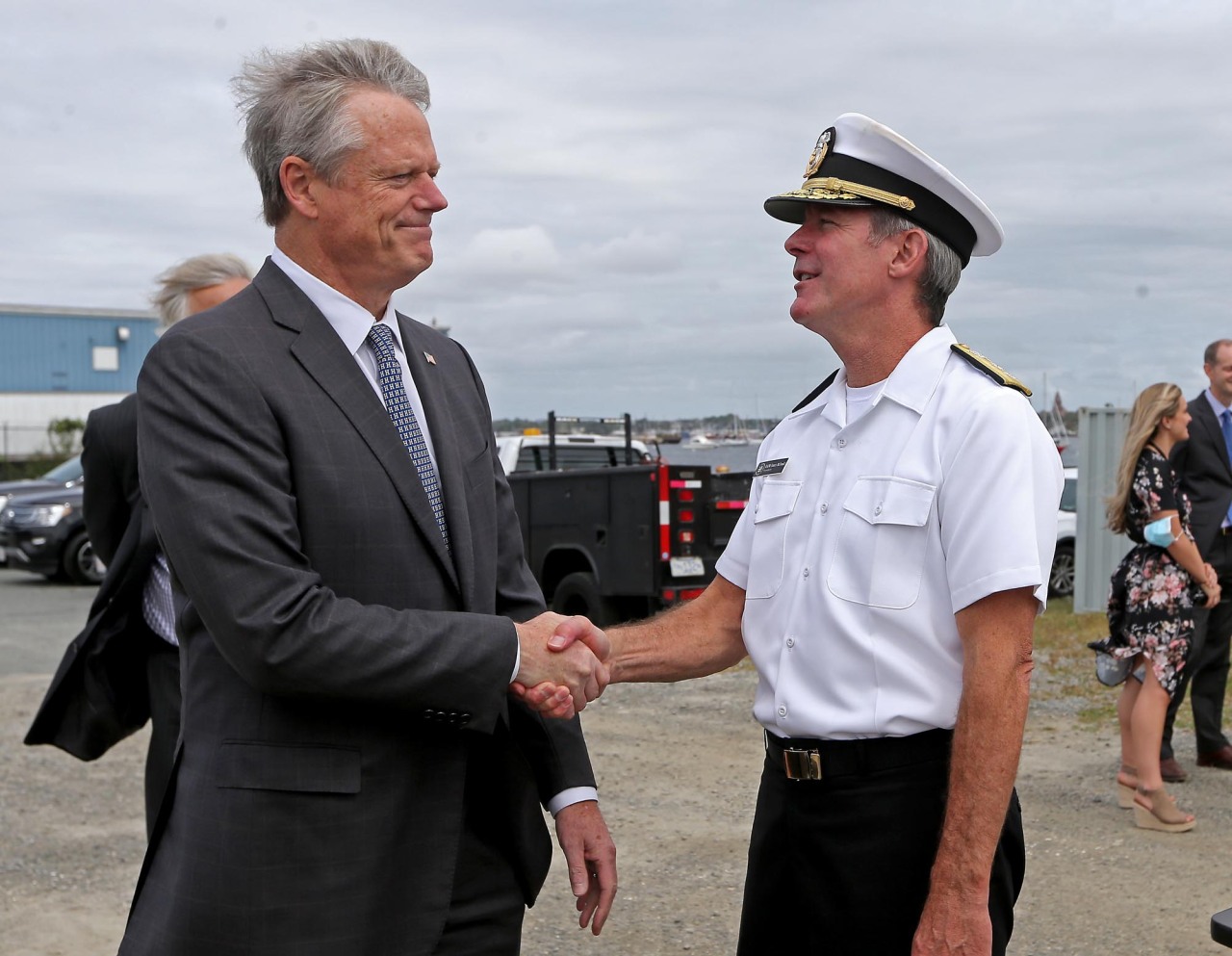
September 17, 2021: Massachusetts Maritime Academy Students Train, Intern In Offshore Wind
After years of university investments into clean energy education, Massachusetts Maritime Academy students spent the summer training and interning in the growing industry of offshore wind.
Three undergraduate students spent this summer interning at Vineyard Wind, an offshore wind development company headquartered in New Bedford. These internships mark the first time academy students worked with the energy company.
Additionally, the university’s certified Global Wind Organization training facility was back up and running after being shut down last year due to COVID-19. The center offers a 40-hour basic safety training course both for matriculated university students and for anyone looking to enter or is already in the business.
Many offshore wind companies require GWO certification for their employees, so having a facility nearby that has the resources and instructors to administer this training is an important part of the growing New England industry, instructor Megan Amsler said.
The center offers five modules: Working at Heights, First Aid, Fire Awareness, Manual Handling and Sea Survival. The university received funding from the Massachusetts Clean Energy Center in 2018 to build the facility, which includes a working at heights facility, a crew transfer training facility and a crew transfer training vessel.
Training was put on hold, however, during the height of the COVID-19 pandemic. Since reopening this summer, the center has had about 90 students complete the course. Some offshore wind companies and unions have sent their employees to the facility to go over the safety basics, while others are entering the industry for the first time.
The working at heights facility has three different types of ladders that workers might encounter inside a wind turbine. Ms. Amsler said students learn how to use equipment, climb up and down safety, rescue themselves and a partner, and descend in an emergency.
“Even though it is just a mock situation that we’re dealing with, people usually still realize, like, ‘Wow, okay. All the things we take for granted when we’re standing on the ground don’t apply when you’re up there on a ladder hanging in a harness,’” Ms. Amsler said.
During sea survival training, students learn how to transfer safely from a boat onto the transition piece of a wind turbine. The transition piece sticks into the water for workers to climb into the turbine out at sea.
Ms. Amsler said there is a lot to learn about safely making this transition.
“You need to know how to trust yourself and make a judgment call if there are waves out there,” she said. “You need to know when is the best time to put your foot over and clip into the equipment that is going to help you climb up safely.”
GWO training also involves learning rescue descents into the ocean from a turbine, how to survive after abandoning a ship, fire safety, and more. The modules require some standard classroom instruction, but to be certified, students must also know what to do in the mock scenarios.
The instructor said her priority is to remind students that safety comes first, especially in a field as dangerous as offshore wind can be.
Before she taught the modules, Ms. Amsler worked with the university to set up the training facility in her role as the executive director of Self-Reliance, a nonprofit that specializes in renewable energy education.
Now that students can take full advantage of the resource, she said she is excited to see the industry continue to grow in New England—even right in the academy’s backyard.
Vineyard Wind, located 15 miles off the coast of Martha’s Vineyard, will be the first commercial-scale offshore wind project in the United States when it is completed.
This summer, academy senior James Dignan, an emergency management major and homeland security minor, worked as a marine operations intern; senior Trevor Dunn, a facilities engineering major, served as an export cable packaging intern; and sophomore George Morant, an international maritime business major, interned as an offshore operations intern working for the construction manager at Vineyard Wind.
Students begin learning about offshore wind starting in their first year at the college. Both Mr. Dunn and Mr. Dignan said they became interested in the industry during their freshman year and have learned more about it in classes since.
Sara Kazamias, assistant director of career and professional services, said the academy has seven different majors, all of which have a different part to play in renewable energy.
“That’s the foundation of where we see our future in the academy,” she said. “It’s getting into these new energy sectors and using each one of our majors to help out in those arenas.”
Students at the maritime college are required to do three internships before they graduate as part of the academy’s “Learn, Do, Learn” moto. This policy emphasizes integrating what students learn in the classroom into hands-on workforce experience, then bringing that knowledge back to the classroom.
Mr. Dignan said in his position a marine operations intern he drew directly from the technical knowledge and problem-solving skills he developed in class. In his role, Mr. Dignan worked on emergency response plans and projects with the US Coast Guard.
He said it is an exciting time to be working in offshore wind.
“The industry has already started to take off and is only going to expand further in the next few years,” he said. “It’s good that the school is investing in a growing industry.”
Mr. Dignan is continuing his work with Vineyard Wind through the end of this month and said he hopes to join the company full-time after he graduates.
This summer was the second time Mr. Morant has interned with renewable energy company. He said he has always been passionate about the field and now, more than ever, knows it is what he wants to pursue in the future. Offshore wind is a combination of his interests in clean energy and maritime business.
He said it is exciting to attend a school that is investing in the same industry he hopes to go into. Mr. Morant recalled briefly speaking to Rear Admiral Francis X. MacDonald, the president of the Academy, at the Vineyard Wind project labor agreement in July and sharing in their enthusiasm.
“I was really grateful to say that I had a small part in the first project in the US, and I hope to put my name on many more in the future,” said Mr. Morant, who will continue to intern with Vineyard Wind through the fall.
Ms. Kazamias said many academy students are interested in pursuing careers in the clean energy sector.
“Our students don’t only have an eagerness to change the world as the enter the workforce, but they’re also groomed as leaders to make the kind of decisions they want to see for their generation,” she said.
August 24, 2021: Crowley, Massachusetts Maritime Academy Partner to Train Offshore Wind Workforce
Crowley Maritime Corporation and Massachusetts Maritime Academy will create a first-of-its-kind training and workforce development program dedicated specifically to the New England region’s offshore wind energy industry.
The partnership, which was announced during the International Offshore Wind Partnering Forum (IPF) conference, will enable the strategic and continued growth of a qualified workforce in the U.S. offshore wind industry, including sea safety and survival instruction.
The program will be certified by the Global Wind Organisation (GWO), a non-profit that sets international standards for safety training.
The academy will coordinate with Relyon Nutec, the world’s largest provider of specialized instruction for energy and industrial sectors, to deliver the courses.
“Crowley and MMA are leaders in the maritime industry, and the joint program will help us build the next generation employee serving in the offshore wind industry,” said Jeff Andreini, vice president, Crowley New Energy. “This partnership will provide workers the skills and knowledge they need, and together we help create cleaner energy sources in the U.S.”
In addition, Crowley – a longtime supporter of the nation’s maritime academies – will continue to provide scholarships, internships and hands-on learning for MMA cadets, including those at sea and at the recently created Maritime Center for Responsible Energy (MCRE) on the academy’s campus in Buzzards Bay, Mass.
“Partnering with industry leaders is critical to our program at MMA. We’re especially proud to team up with Crowley to help prepare the workforce for opportunities in the offshore wind industry,” said Rear Admiral Francis X. McDonald, USMS, president of the Massachusetts Maritime Academy.
“Training and internships will help our cadets gain expertise and experience, which will be critical as they pursue careers in this growing field.”
Going beyond training, the partnership also will direct resources to create outreach programs and workforce development for underrepresented population groups, specifically in Massachusetts Gateway Cities. Those communities are rebuilding urban centers with unrealized potential and past industrial bases.
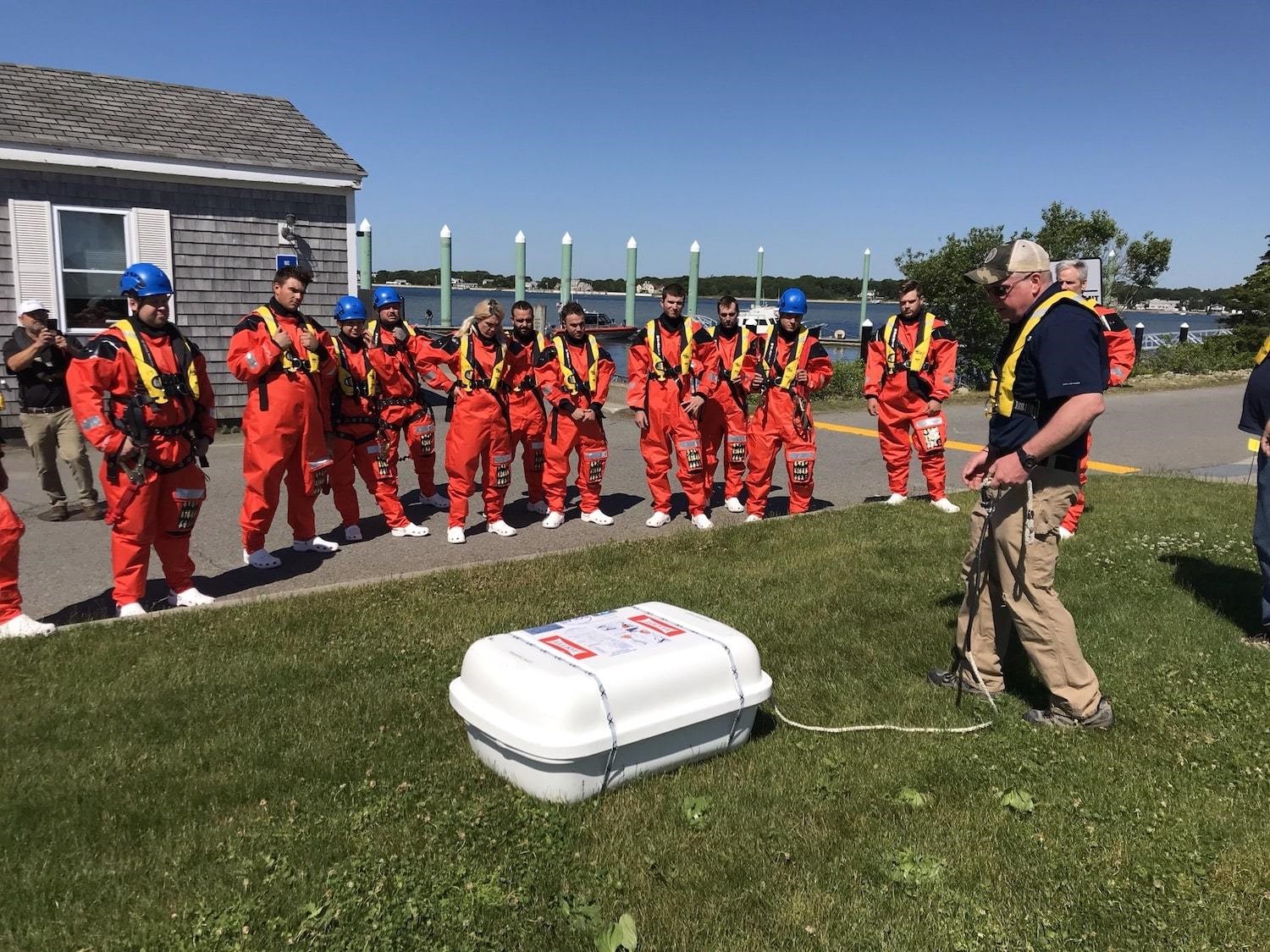
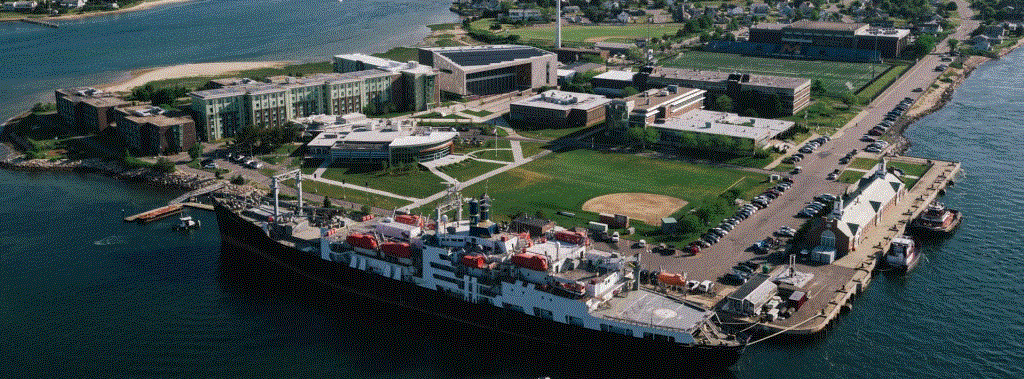
August 23, 2021: Massachusetts Maritime Academy Cadets Join Offshore Wind Industry as Summer Interns at Vineyard Wind
STUDENTS ARE GAINING EXPERIENCE AND CONTRIBUTING TO A GROWTH INDUSTRY
BUZZARDS BAY, MA – Aug. 23, 2021 – With the growth of the offshore wind industry in the Northeast Region, Massachusetts Maritime Academy (MMA) is helping its students prepare for jobs of the future. All cadets have co-op requirements, and this summer three students are gaining experience in this new and growing industry as interns at Vineyard Wind, an offshore wind development company that will build the first commercial-scale offshore wind energy project in the United States, to be located 15 miles south of Martha’s Vineyard.
“Experiential learning is part of our culture. Learning by doing is an important aspect of our curriculum at MMA,” said Sara Kazamias, Assistant Director of Career and Professional Services at the Massachusetts Maritime Academy and alumna of the Class of 2010. “Offshore wind is a new and growing field that touches every major at the Academy. We are so pleased that three of our students are gaining hands-on experience with Vineyard Wind.”
Vineyard Wind is looking to expand its workforce amid the growing need for qualified candidates. The company looked to MMA for interns who have strong skills that can transfer to offshore wind.
“As we begin the installation phase of the nation’s first utility-scale offshore wind project, Vineyard Wind is excited to host James, Trevor and George this summer as part of our recently expanded internship program, which offers more opportunities to work alongside our engineering, construction, and marine safety managers,” said Jennifer Cullen, Workforce Development Manager at Vineyard Wind. “Massachusetts Maritime Academy has been a fantastic partner in readying students and alumni for the new career paths offered in this industry.”
Senior James Dignan is an Emergency Management and Homeland Security major from Amesbury, MA. He’s spending the summer as a Marine Operations Intern for Vineyard Wind helping to write emergency response plans for the construction and operational phases of the wind farm under development. The practical experience he gained in his emergency management classes at Massachusetts Maritime prepared him to take on this challenge.
“Vineyard Wind is a company I have loved working for,” said Dignan. “They have given me opportunities to put what I've learned over my time at the Academy into practice by writing plans actually being used by the company.”
Senior Trevor Dunn, a Facilities Engineering major from Marshfield, MA, is an Export Cable Packing (ECP) Intern at Vineyard Wind. In this role, he’s working with the engineering team focused on export cables – the cables used to distribute power from offshore to onshore.
“I’ve been attracted to the offshore wind industry since I was a freshman at MMA and knew the Academy was a perfect pathway for me to eventually work offshore,” Dunn said. “At Vineyard Wind, I’m gaining experience in routing issues, design, project scheduling, project permitting, regulations such as the Jones Act along with other engineering needs. It’s been a great opportunity and it’s helping me reach my goal of working in the offshore wind industry as a career.”
George Morant, a sophomore from Holliston, MA, is an Offshore Operations Intern working for the Construction Manager at Vineyard Wind primarily focused on establishing internal contractor protocols. As an International Maritime Business major, he is using skills he has acquired in the classroom.
“The experience I have gained in classes focusing on vessel chartering and contract management, and international and maritime regulations has repeatedly been directly applicable in this role,” Morant said. “I have found my experience at Vineyard Wind to be extremely rewarding, and I am honored to be able to say I contributed to the first utility-scale offshore wind project in the United States. I plan to continue on the offshore wind path through the rest of my Mass Maritime experience and on into my career.”
Gaining work experience while pursuing an academic degree pays off. MMA has a job placement rate of 85 percent for its undergraduates.
“Working closely with professionals in the offshore wind industry is a privilege,” said Kazamias. “We are so fortunate to have a relationship with Vineyard Wind. The company is a great partner to the work we’re doing at MMA, and the employees are excellent mentors and role models for our students.”
About Massachusetts Maritime Academy (MMA): MMA is the nation's leader in GWO training, continues to provide innovative insight in maritime responsibly energy initiatives, and is a fully accredited, four-year, co-educational state university offering Bachelor and Master of Science degrees that are highly regarded in the worldwide maritime industry and beyond. For more than 100 years, MMA has been preparing women and men for exciting and rewarding careers on land and sea. As the nation's finest co-ed maritime college, MMA challenges students to succeed by balancing a unique regimented lifestyle with a typical four-year college environment. Located on Cape Cod, at the mouth of the scenic Cape Cod Canal, Massachusetts Maritime Academy is the ideal college to pursue the love for the ocean, concern for the environment, interest in math and science, and thirst for adventure. Follow MMA on FB: @massmaritime; IG: @massmaritime; Twitter: @MMAadmissions; YouTube: Massachusetts Maritime Academy
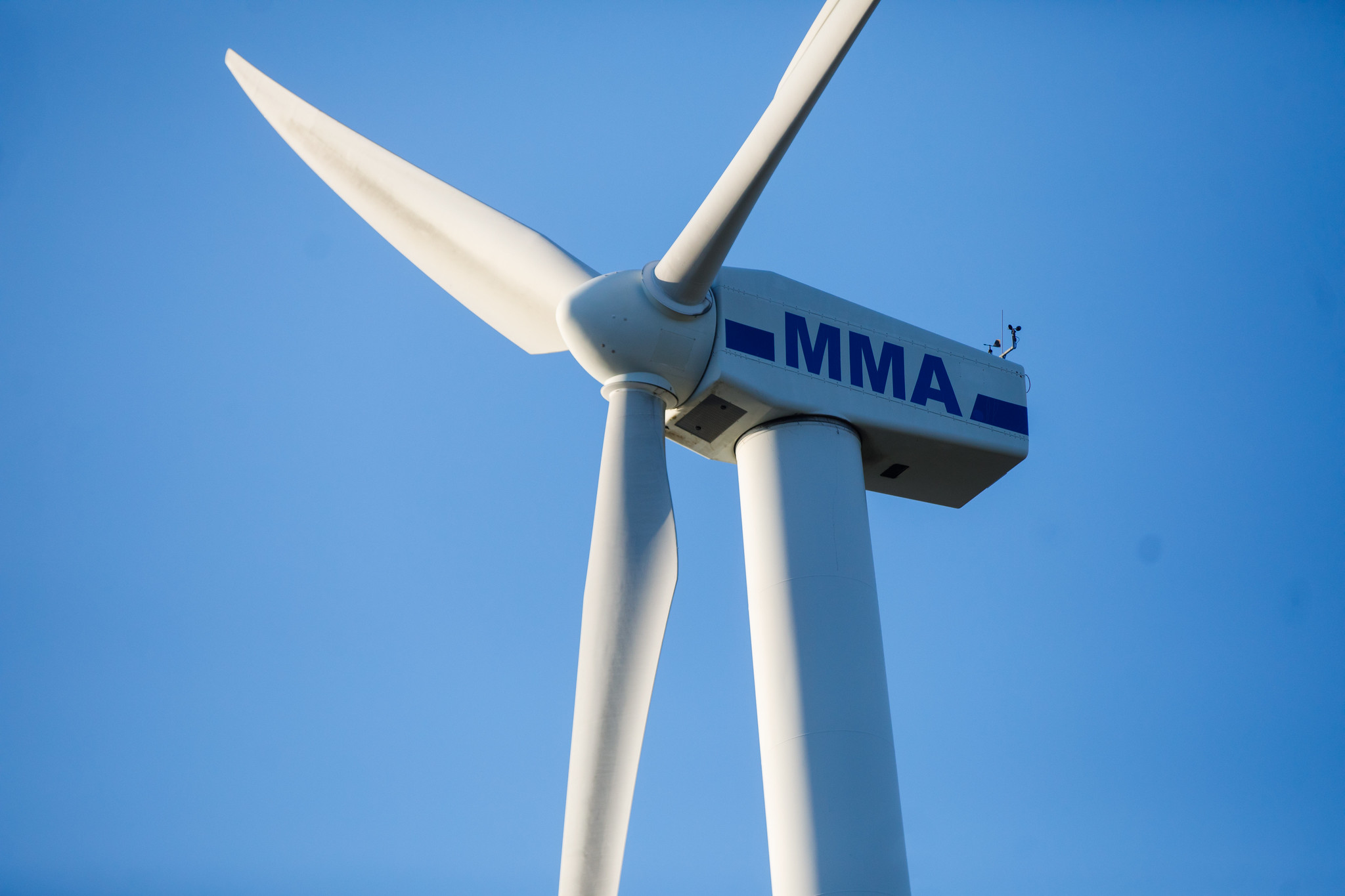
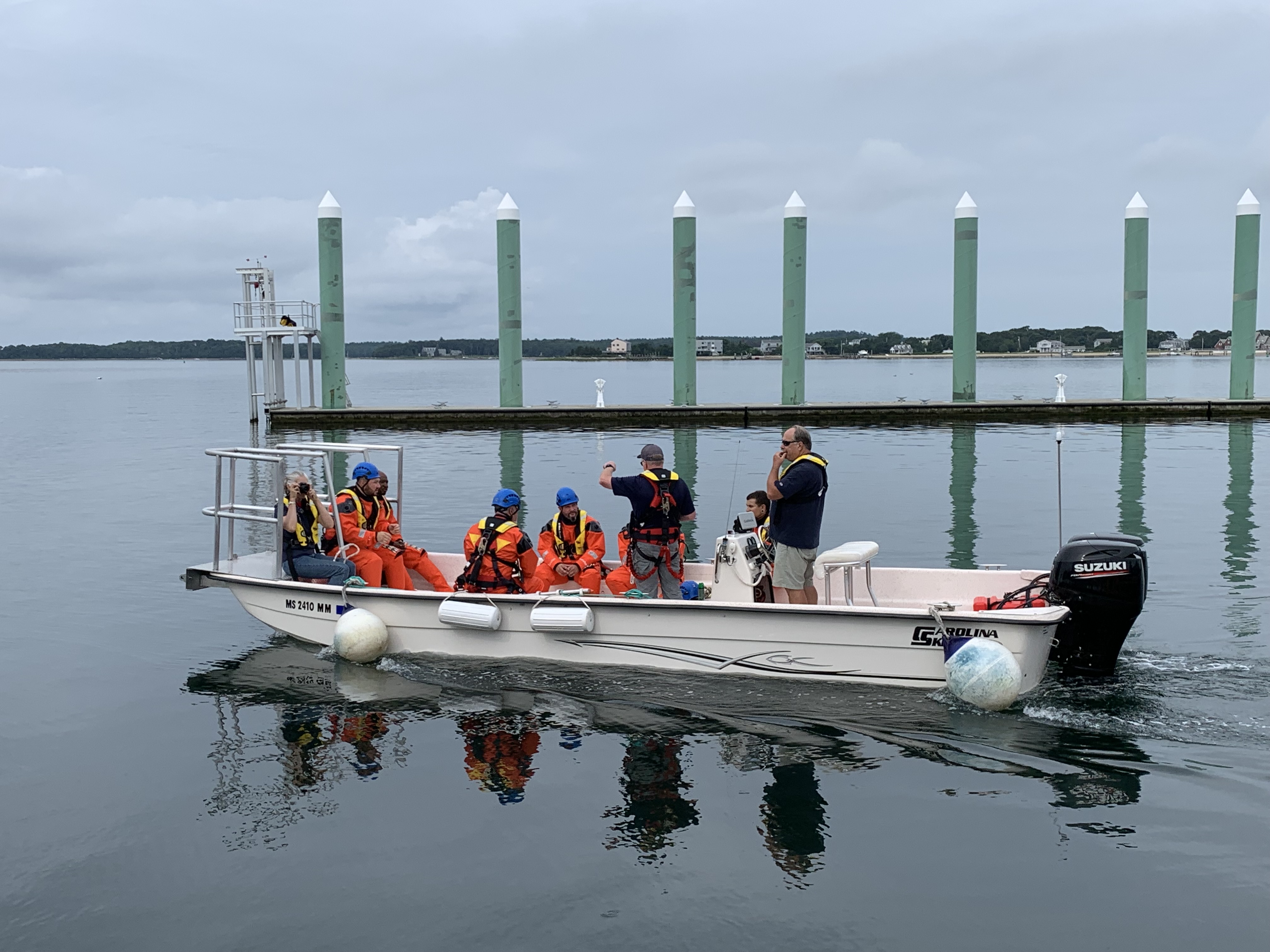
August 19, 2021: Massachusetts Maritime Academy Trains More Than 80 Individuals to Work in Clean Energy Industry
Pile Drivers and Divers take advantage of training in anticipation of jobs coming to the region
BUZZARDS BAY, MA – Aug. 19, 2021 – The Massachusetts Maritime Academy (MMA) is helping prepare the workforce for clean energy opportunities that are coming to the region. The Academy is delivering key training for personnel who will build the windfarms that will power the Northeast region with clean energy.
In 2018, MMA received funding from the Massachusetts Clean Energy Center to build its GWO Training Center at the Academy’s Maritime Center for Responsible Energy (MCRE). The GWO Training Center consists of a waterfront Crew Transfer Training Facility (CTTF), a 25-foot Crew Transfer Training Vessel, and a Working at Heights training facility. At the end of 2019, MMA, in cooperation with RelyOn Nutec, began offering the globally recognized GWO Basic Safety Training (BST) at its Buzzards Bay campus, becoming the first facility in the nation to offer all five modules of GWO BST for Offshore Wind.
“It’s a fact that the clean energy industry is growing, and we are taking steps to be involved in this unique opportunity,” said Rear Admiral Francis X. McDonald, USMS, President of the Massachusetts Maritime Academy. “One of the most important ways we can contribute is by training the men and women who will be on the front lines of this emerging industry.”
The GWO BST course, developed by RelyOn Nutec, an established leader in the offshore wind industry, consists of five modules: Working at Heights, First Aid, Fire Awareness, Manual Handling, and Sea Survival. The modules are taught by MMA instructors whose goal is to have participants gain an awareness of the hazards encountered when working in the wind industry and how to control and mitigate against those hazards.
Currently, there are three windfarms in various stages of development that will be built in the Atlantic Ocean approximately 20 miles south of Nantucket and Martha’s Vineyard. “The developers of these windfarms are all requiring that anyone working on these sites must complete Basic Safety Training,” said Jenni Lewis, MD RelyOn Nutec Gulf of Mexico (MX, USA and TT). “We found the perfect match cooperating with MMA. Our subject matter experts and instructors have a deep understanding of working in high-risk environments and have first-hand experience of the potential risks in the renewables industry. MMA has the experience to deliver this critical course, ensuring quality training to the people who will be out on open water building the wind turbines.”
Members of Pile Drivers and Divers Local 56, the marine construction local of the North Atlantic States Carpenters Union, are taking advantage of the course. “This training is critical to our members,” said Dave Borrus, Business Manager of Pile Drivers & Divers Local 56. “The opportunity to work in the clean energy industry is great for our members but there are occupational risks, too. Safety must be at the forefront of each member’s mind, and this training is helping them understand and prepare for the hazards they may face.”
The Massachusetts Clean Energy Center is sponsoring Local 56 members’ participation with a $100,000 Workforce Development Grant. The North Atlantic States Carpenters Training Fund (NASCTF) has co-sponsored training with an addition $50,000. So far, 39 members have graduated from the course, including three at the instructor level, and an additional 24 individuals are scheduled to participate in October and November.
Training consists of both classroom and practical exercises. Participants acquire knowledge and confidence by learning the practical skills they need through practice. Students learn the proper use of personal protective equipment, emergency equipment, and procedures with the end result being able to appropriately respond in the event of an emergency.
According to Capt. Mike Burns, Executive Director of the Academy’s MCRE, “Every group that has gone through the training has been exceptional. The participants are highly skilled professionals who understand the importance of safety in this industry. It’s our honor to help them prepare for the next phase in their careers.”
About Massachusetts Maritime Academy : Massachusetts Maritime Academy is the nation's leader in GWO training, continues to provide innovative insight in maritime responsibly energy initiatives, and is a fully accredited, four-year, co-educational state university offering Bachelor and Master of Science degrees that are highly regarded in the worldwide maritime industry and beyond. For more than 100 years, Massachusetts Maritime Academy has been preparing women and men for exciting and rewarding careers on land and sea. As the nation's finest co-ed maritime college, Massachusetts Maritime Academy challenges students to succeed by balancing a unique regimented lifestyle with a typical four-year college environment. Located on Cape Cod, at the mouth of the scenic Cape Cod Canal, Massachusetts Maritime Academy is the ideal college to pursue the love for the ocean, concern for the environment, interest in math and science, and thirst for adventure. Follow MMA on FB: @massmaritime; IG: @massmaritime; Twitter: @MMAadmissions; YouTube: Massachusetts Maritime Academy
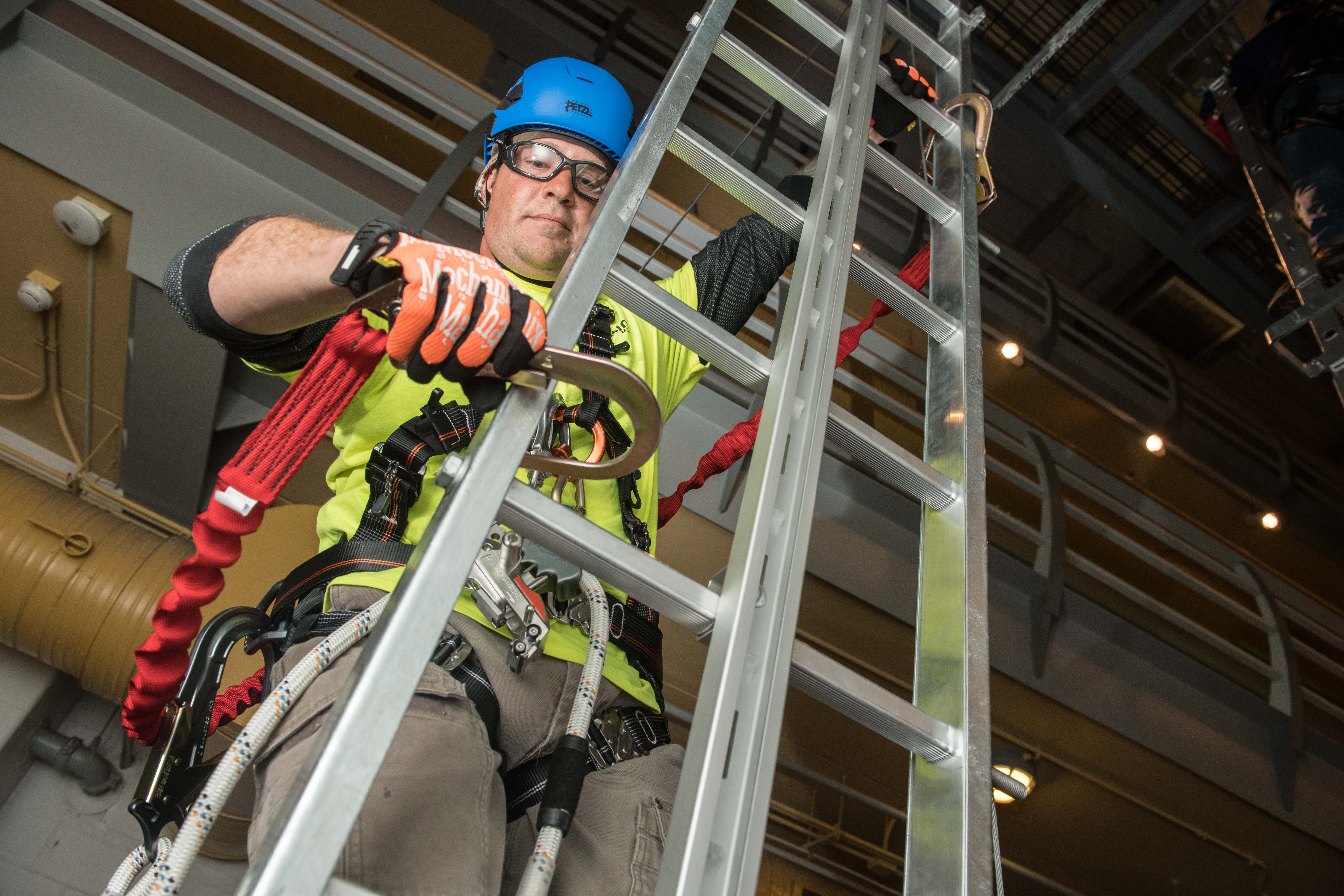
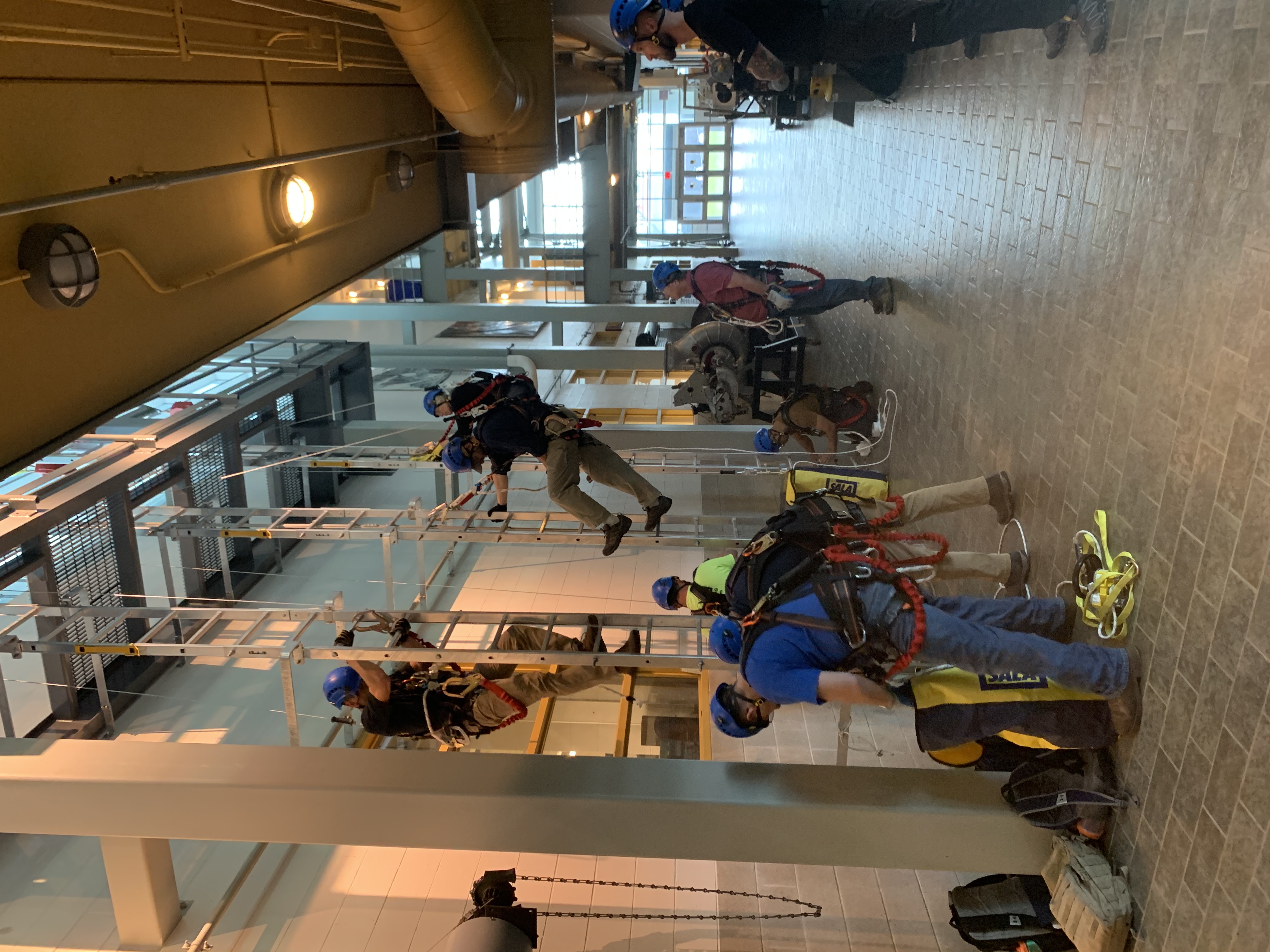
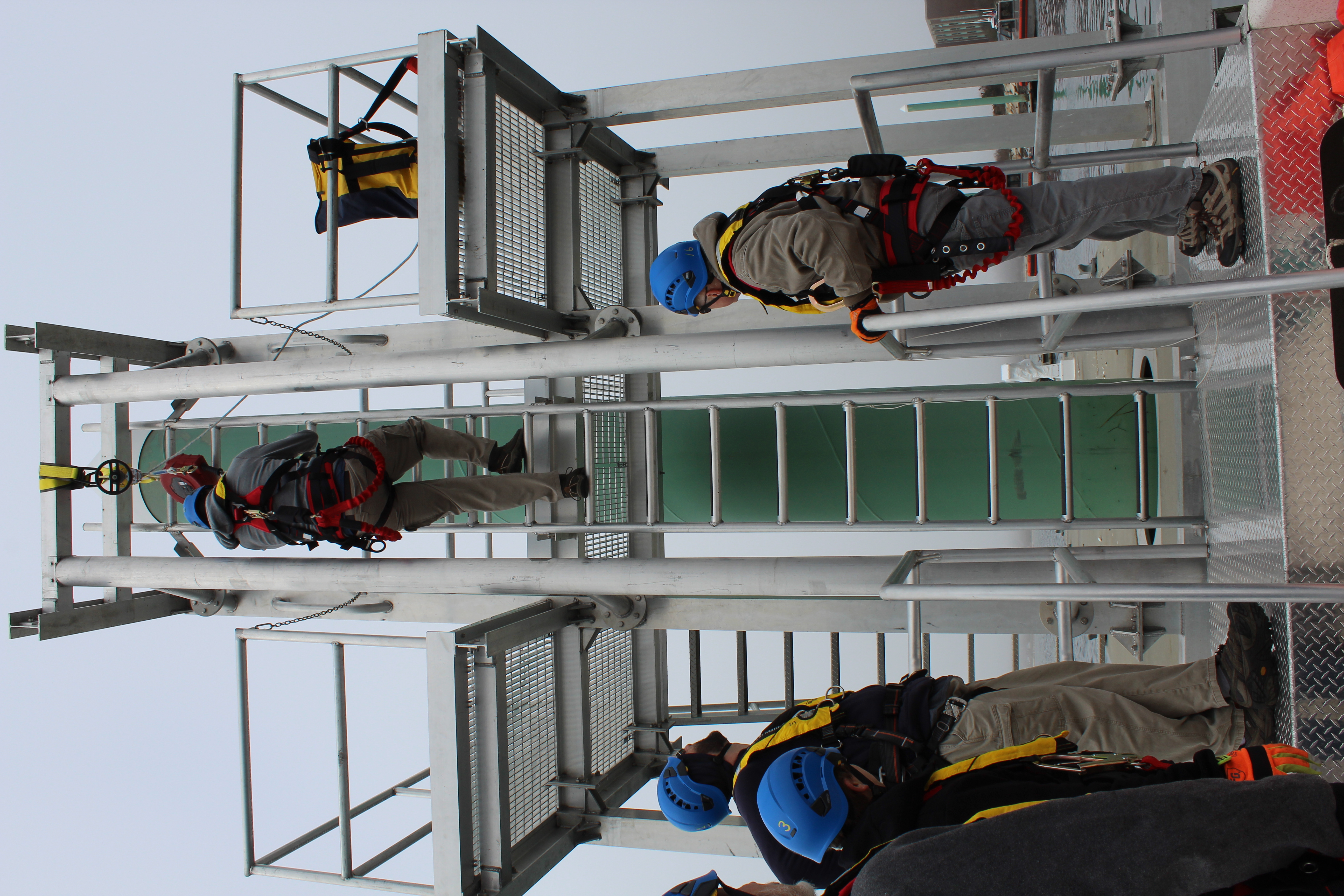
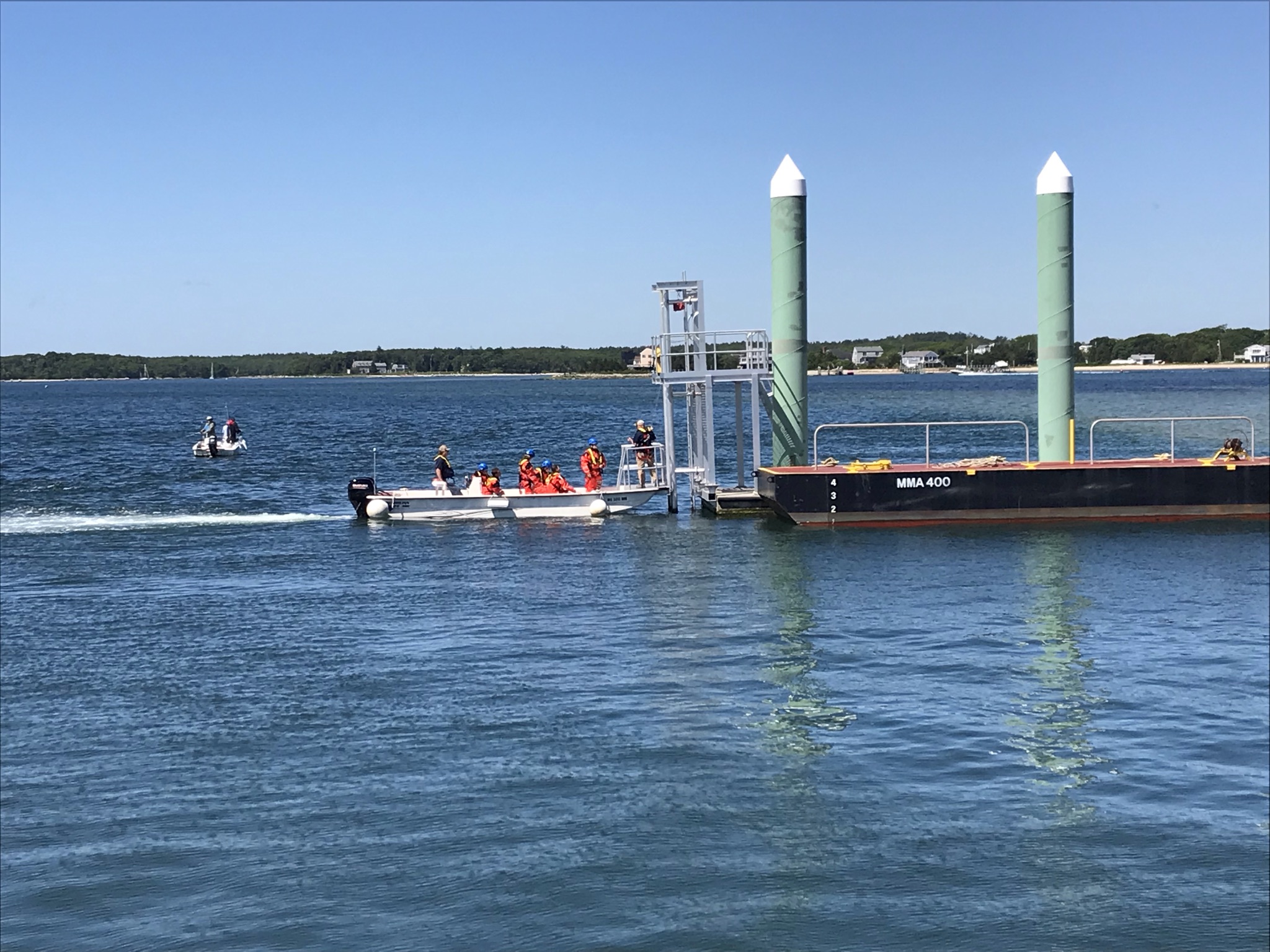
August 12, 2021: Massachusetts Maritime Academy Appoints Executive Director Of Maritime Center For Responsible Energy
Capt. Michael R. Burns Jr. will lead the Academy’s work in renewable energy
BUZZARDS BAY, MA – Aug. 12, 2021 – The Massachusetts Maritime Academy (MMA) is pleased to announce Capt. Michael R. Burns Jr. as the first Executive Director of the Academy’s Maritime Center for Responsible Energy (MCRE). In this new role, Capt. Burns will oversee the MCRE that was established in August 2021 to deliver training to the renewable energy industry, develop robust, collaborative relationships with renewable energy stakeholders, and coordinate all the Academy's renewable energy efforts. Capt. Burns will lead all aspects of the Center’s work, including developing and delivering offshore wind workforce training, raising awareness of the Academy's efforts in renewable energy, and managing MMA’s marine environmental initiatives.
“Capt. Burns brings knowledge and experience in the field of renewable energy to this extremely important role,” said Rear Admiral Francis X. McDonald, USMS, President of the Massachusetts Maritime Academy. “We are extremely fortunate to have a leader and innovator at the Academy and are proud to promote one of our own to this position. I look forward to seeing the MCRE develop under his leadership.”
The offshore wind industry will be a key focus for Capt. Burns in this role. The United States Department of Energy estimates 43,000 new jobs will be created in the offshore wind market by 2030, and a Massachusetts Clean Energy Center study estimates that over the next decade, offshore wind farms will create 2,000 - 3,000 jobs and generate economic impacts between $1-$2 billion in the region.
“This is such an exciting time,” said Capt. Burns. “Offshore wind is basically a new industry in the U.S. and it’s creating so many opportunities for our cadets and alumni as well as the entire region.”
Prior to his appointment to Executive Director of the MCRE, Capt. Burns was the Director of MMA’s Center for Maritime and Professional Training. In that role he was responsible for the day-to-day administration and operation of MMA’s professional training division, which provides a variety of non-credit, professional development courses to approximately 700 students per year. During his tenure, he developed a comprehensive safety training program for the offshore wind industry.
“MMA has been training people to work at sea for 130 years,” Capt. Burns said. “We’re excited to apply our experience to the offshore wind industry as it develops in the U.S. and to support the Commonwealth’s commitment to renewable energy.”
Living in Plymouth, MA, with his family, Capt. Burns holds two degrees from Massachusetts Maritime Academy. In 1992 he received a Bachelor of Science degree in marine transportation and in 2018 he earned a Master of Science degree in emergency management. He holds a USCG Master's License of Unlimited Tonnage with over 14 years’ experience on government owned, contractor operated vessels. Capt. Burns is an officer in the USNR's Strategic Sealift Officer Force, an Associate Fellow of the Nautical Institute as well as a member and trustee of the Boston Marine Society.
As he takes on this role, Capt. Burns said, “I look forward to working with the Academy’s leaders, our growing number of industry partners, the cadets, and the entire MMA family to further establish the Academy as a leader in offshore renewable energy training. “
About Massachusetts Maritime Academy (MMA): MMA is the nation's leader in GWO training, continues to provide innovative insight in maritime responsibly energy initiatives, and is a fully accredited, four-year, co-educational state university offering Bachelor and Master of Science degrees that are highly regarded in the worldwide maritime industry and beyond. For more than 100 years, MMA has been preparing women and men for exciting and rewarding careers on land and sea. As the nation's finest co-ed maritime college, MMA challenges students to succeed by balancing a unique regimented lifestyle with a typical four-year college environment. Located on Cape Cod, at the mouth of the scenic Cape Cod Canal, Massachusetts Maritime Academy is the ideal college to pursue the love for the ocean, concern for the environment, interest in math and science, and thirst for adventure. Follow MMA on FB: @massmaritime; IG: @massmaritime; Twitter: @MMAadmissions; YouTube: Massachusetts Maritime Academy
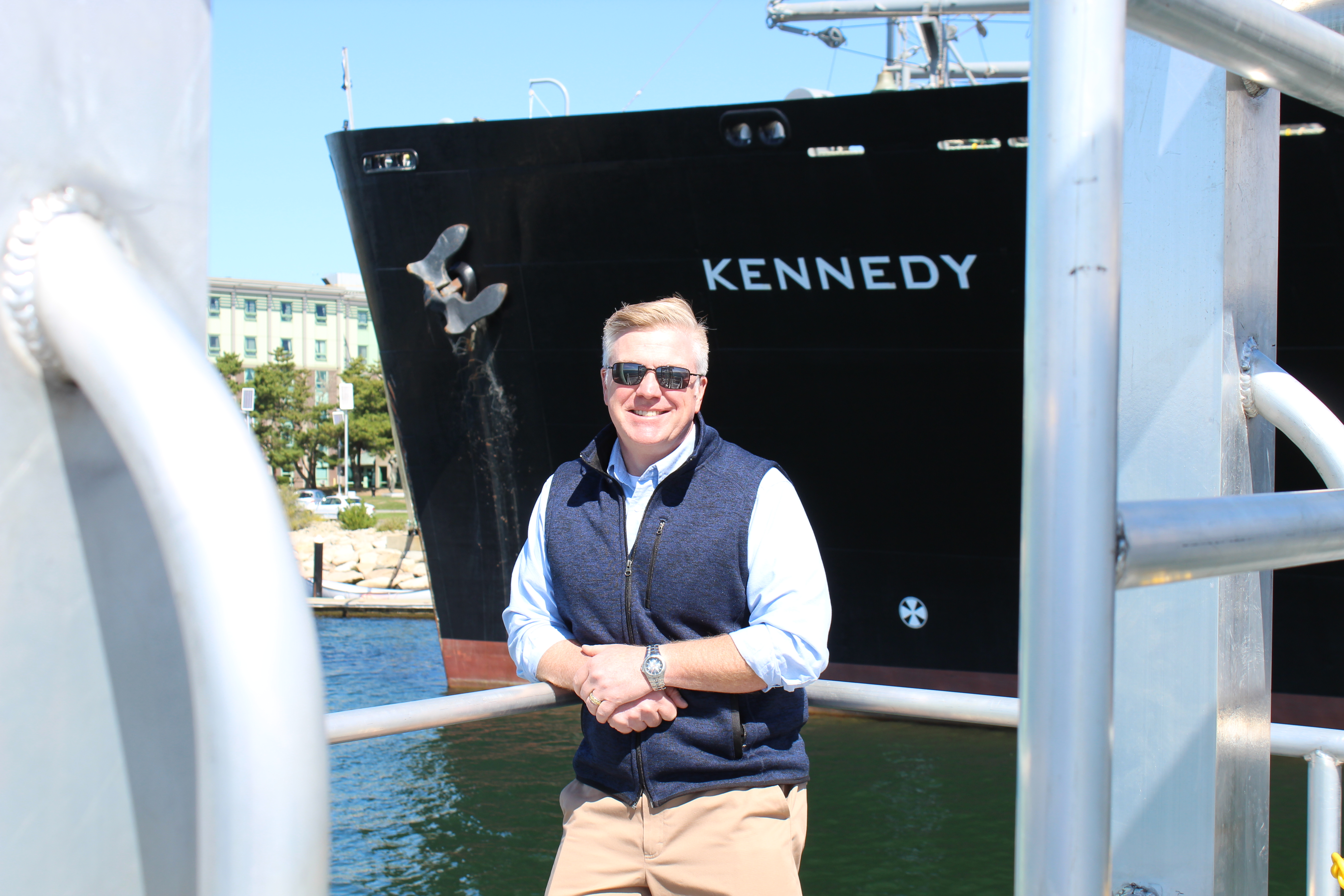
July 28, 2021 Massachusetts Maritime Academy Launches $50M Responsible Energy Initiative
BUZZARDS BAY, MA – July 28, 2021 - Massachusetts Maritime Academy, long known for producing skilled mariners, top energy engineers and, more recently, highly qualified offshore wind workers via its first-in-the-nation Global Wind Organisation (GWO) training center, has announced visionary plans to invest $50M in the university's renewable & responsible energy initiatives.
The bold effort will include the launch of the Academy's Maritime Center for Responsible Energy (MCRE); construction of a new $30M energy, engineering and science laboratory building; and the demolition and rebuild of the Academy's aging conference center to create a 36,000 square foot professional conference center & hotel.
"This investment codifies our ongoing work in support of renewable & responsible energy and, more importantly, signals our deep global commitment to our stewardship of the world's oceans for decades to come,” said Massachusetts Maritime Academy president, Rear Admiral Francis X. McDonald, USMS. “This would not be possible without the continued support of our public officials and private donors who have always seen and understood the value that the Academy’s research and well-trained cadet workforce adds to a healthy economy.”
The MCRE will serve as the global hub for the Academy's ongoing work in offshore wind and other renewable energy initiatives including marine hydrokinetic, fuels cells and energy storage programs. It will also anchor the Academy’s continuing consulting work in the maritime environmental space including greenhouse gas and decarbonization efforts.
The new energy, engineering and science lab facility will house a renewable maker/design space, fully functioning aquaculture facility, offshore wind technical training lab and marine science labs. Design of the new laboratory building will begin this fall and the facility is expected to open in 2024.
Modeled similarly to the Cape Cod style homes found dotting the local shorelines, the new conference center will have multi-use conference and training spaces including a 180-seat function room and multiple smaller break-out spaces. The top floors will offer 35 Academy dorm rooms which can also be used for functions and conferences with a 70-bed total capacity. The center is anticipated to open in 2022.
About Massachusetts Maritime Academy (MMA): MMA is the nation's leader in GWO training, continues to provide innovative insight in maritime responsibly energy initiatives, and is a fully accredited, four-year, co-educational state university offering Bachelor and Master of Science degrees that are highly regarded in the worldwide maritime industry and beyond. For more than 100 years, MMA has been preparing women and men for exciting and rewarding careers on land and sea. As the nation's finest co-ed maritime college, MMA challenges students to succeed by balancing a unique regimented lifestyle with a typical four-year college environment. Located on Cape Cod, at the mouth of the scenic Cape Cod Canal, Massachusetts Maritime Academy is the ideal college to pursue the love for the ocean, concern for the environment, interest in math and science, and thirst for adventure. Follow MMA on FB: @massmaritime; IG: @massmaritime; Twitter: @MMAadmissions; YouTube: Massachusetts Maritime Academy
